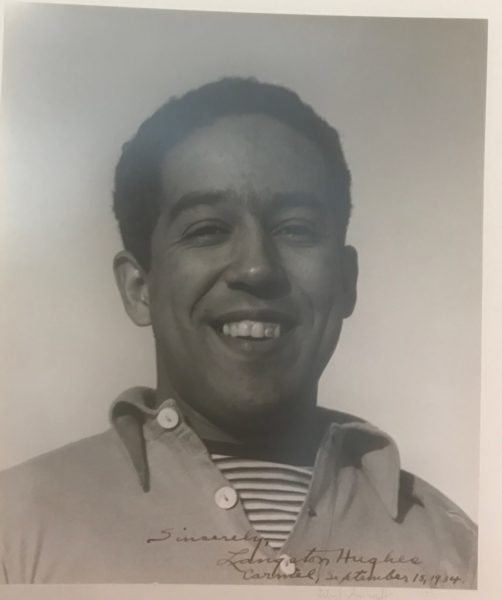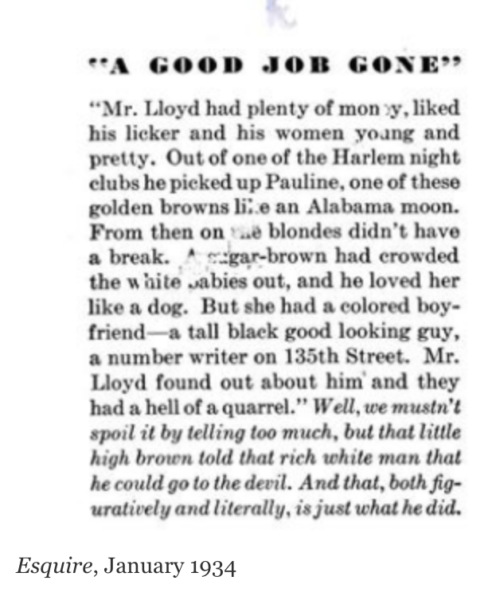Langston Hughes in California & Nevada: Carmel, San Francisco & Reno
An Annotated & Illustrated Timeline 1932-34
April – June 1932
Langston Hughes was 31 when he first came to California, in April 1932 at the end of a two-part tour of the South and Southwest which had begun in September 1931. It was intended to raise funds to support the Scottsboro Boys’ defense.
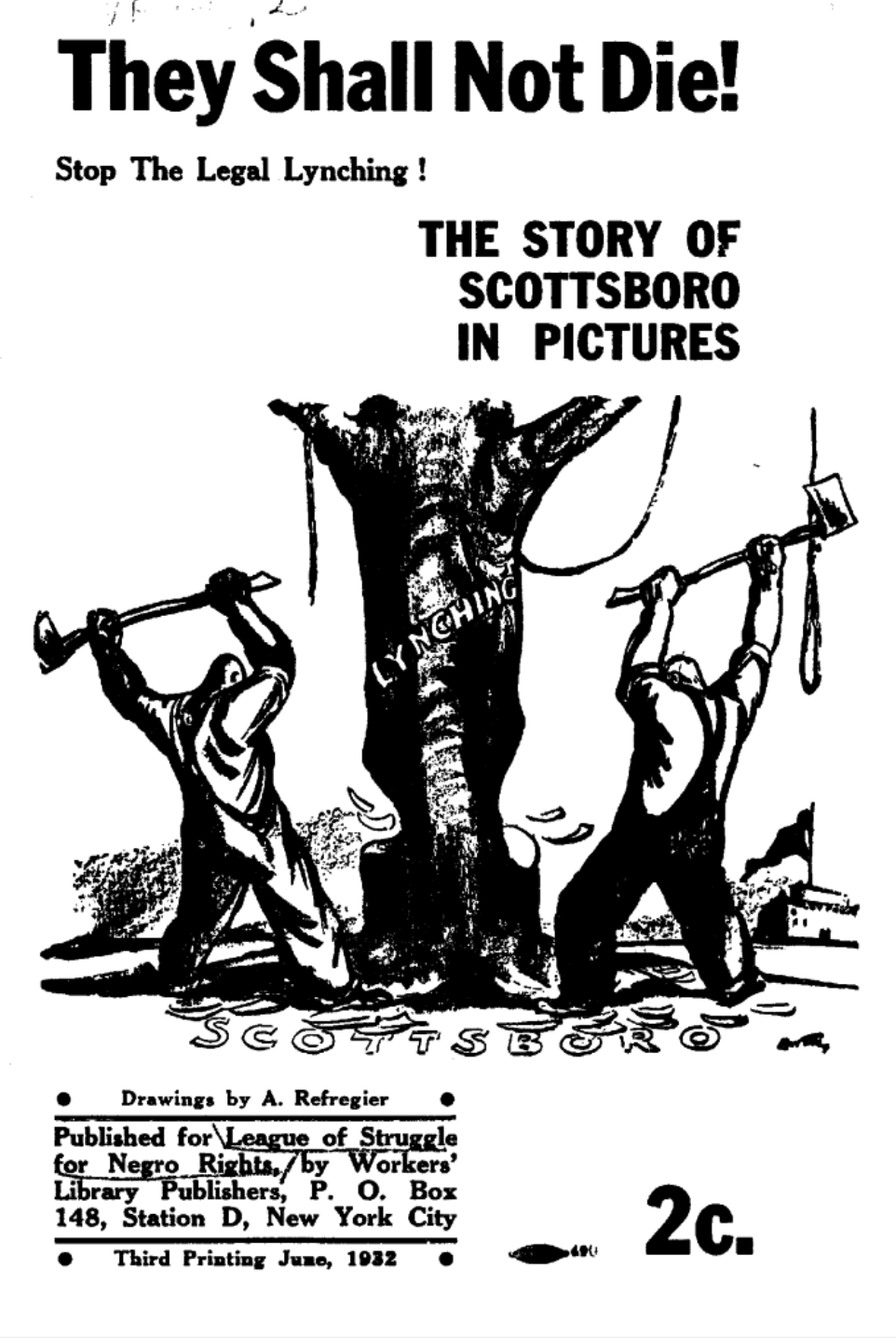
They Shall Not Die! Stop the Legal Lynching: the Story of the Scottsboro Boys in Pictures (League of Struggle for Negro Rights, 1932) is an excellent summary of the case from the radical left’s point of view.]
Arrested on March 25, 1931, they were still in an Alabama prison where, in January 1932, Hughes visited them and attended one of their early trials. On tour, he earned small honoraria–originally asking for $50 a date but sometimes settling for $10–where he was hosted mostly on Black college campuses, and he sold specially printed copies of his first book of poems, The Weary Blues (Knopf, 1931) and a new chapbook “The Negro Mother” (Golden Stair, 1931).


Illustration by Prentiss Taylor from “The Negro Mother”
The Scottsboro case accelerated Hughes’ radicalization and would continue to occupy much of his energy through 1934 and beyond as their cases dragged on in courts.
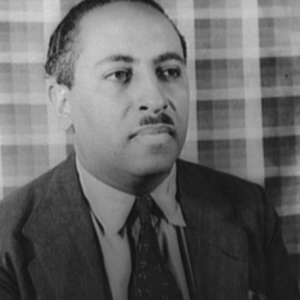
Arna Bontemps portrait by Carl van Vechten. Library of Congress.
After Christmas 1931 holidays with the Arna Bontemps family in Alabama, Hughes concluded the first part of his tour and returned to New York. To resume the tour, he hired a driver, James Ronald Derry, who had been a track star at Lincoln University a year ahead of Hughes in school. Derry wanted to get to the Summer Olympics in Los Angeles and didn’t tell Hughes until after he was hired that he didn’t know how to drive, so he stayed on as Hughes’ unpaid secretary and Hughes hired George Lee, an unemployed math instructor, also from Lincoln, as driver and “tour manager.” The three of them left New York on March 28, 1932 and were in Dallas for an April 1 reading. After 3 weeks of readings and lectures in Texas, they headed west, through the “hot desert country [Hughes] loved . . . And at last he saw California.” [Life I: 236] An April 26 letter from Hughes to Toy Harper describes Los Angeles and his enchantment with it: oranges sold for a penny and ordinary Blacks living in big houses “with miles of yards.”
In Los Angeles, Hughes stayed with Loren Miller (at 837 E. 24th St.), a lawyer but more importantly a reporter and columnist for the California Eagle, one of the oldest continuously publishing Black newspapers in the West. Like Hughes, Miller felt that much of contemporary Black art was not reflective of rural experiences, especially those of darker and poorer people. Miller agreed with Hughes’ assessment that these elitists were “the Black bourgeoisie.” The two struck up an amicable correspondence through John Reed Club contacts before Hughes left New York to start his tour, and Miller worked hard to set up dates for Hughes to read and speak while on the west coast. They were both also keenly alert to the unfolding Scottsboro Boys case; Miller had covered the LAPD-Red Squad’s blocking of a production of Scottsboro, Unlimited and considered himself to be Hughes’ west coast agent.
While working from Miller’s home, Hughes caught up on correspondence and gave a poetry reading at a local church (on April 21, sponsored by the Los Angeles Civic League), and a few days later he lectured on “Negro Literature” to the local John Reed Club. (When vigilantes associated with the LA police department raided the John Reed Club of Los Angeles on February 12, 1933, they destroyed a mural panel based on the Scottsboro case painted by Philip Guston and another mural panel painted by Reuben Kadish; Hughes’ association with the Carmel John Reed Club would lead to later difficulties and, ultimately, his essay “The Vigilantes Knocked at My Door” and his first escape to Reno in August 1934.)
In early May 1932, with Loren Miller and the poet Norman Macleod, then a student at the University of Southern Caifornia, Hughes visited the Hoover Dam construction site “to investigate charges of racial discrimination” because the federally funded project included no Black workers. ” Macleod’s poem “Boulder Dam Remembered from El Tovar” appeared in New Masses in December 1932. It’s framed by the poet observing a sunset from the porch of the famed hotel El Tovar Hotel in a group of “three black boys and a white, bound together with the same thought and language.” That thought, of the exploited workers in their deadly daily grind, is expressed in the Communist / Red language popular with the Left. Macleod, the poet, is the White boy; Hughes, Miller and most likely Matt Crawford the three Black ones. [Boulder Dam was later re-named to honor President Hoover.]
During peak employment at the dam, during the summmer of 1934, less than 20% of the 5,200 jobs were held by Blacks. [Coray, Michael. “African-Americans in Nevada.” Nev Hist Q 35.4 Winter 1992: 239-257]

New Masses, December 1, 1932: 28.
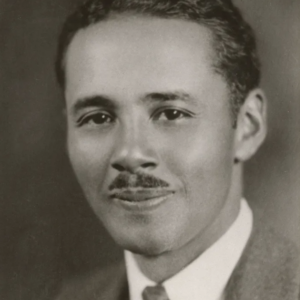
Loren Miller, 1930. Huntington Library, San Marino, California.
On May 8, Hughes attended a mass meeting on the Scottsboro case that featured a John Reed Club-sponsored production of his new play “Scottsboro Limited,” which Los Angeles police had previously kept from being publicly produced. LAPD’s Red Squad, the intelligence unit begun by police chief James E. Davis to investigate local Communist threats, was led by William F. Hynes, and became quickly notorious for its often brutal harassment of John Reed Club and other organizations considered subversive in an ever-widening paranoia. In the case of the planned production of Hughes’ play, organizers moved it from one location, a church on Adams Boulevard, to Universal Negro Improvement Association Hall on Central Avenue to try to avoid the Red Squad, but the production had already been shut down by the time Loren Miller arrived, well before showtime. In a subsequent incident, the Red Squad went further, assaulting and arresting many of those attending a January 1932 meeting of the International Labor Defense. After that incident, Miller publicly criticized Hynes and his vigilante squad but an investigation found no offenses by police.

Red Squad’s leader Ernest Hynes (L) with LAPD Chief James E. Davis, circa 1934.
On May 9, Hughes’ poetry reading at the Los Angeles Philharmonic Auditorium, sponsored by the Liberal Forum, also featured songs by Clarence Muse. [As director of the California WPA’s “Negro unit,”‘ Muse would later employ Hughes during 1938-39; the two co-wrote Way Down South, which was badly received and led to Hughes founding the New Negro Theatre in Los Angeles. There are some cringe-worthy scenes in. it, but it’s a fairly progressive film, especially for its time]

Don’t You Want To Be Free premiered on March 19, 1939 in Los Angeles. Langston Hughes Papers, Beinecke Library, Yale University.
Soon after the reading and recital with Muse, Hughes headed north, where on May 14 he presented a poetry reading and discussion of his poems at the Berkeley High School auditorium (at the corner of Alston Way and Grove Street) sponsored by the Acorn Club of Oakland. For the evening, Hughes stayed at the home of Matt Crawford, 1920 Acton St, Berkeley. [Acorn Club history likely involved with Acorn Project built in Oakland 1957?]

Matt Crawford Papers, Emory University, Atlanta.
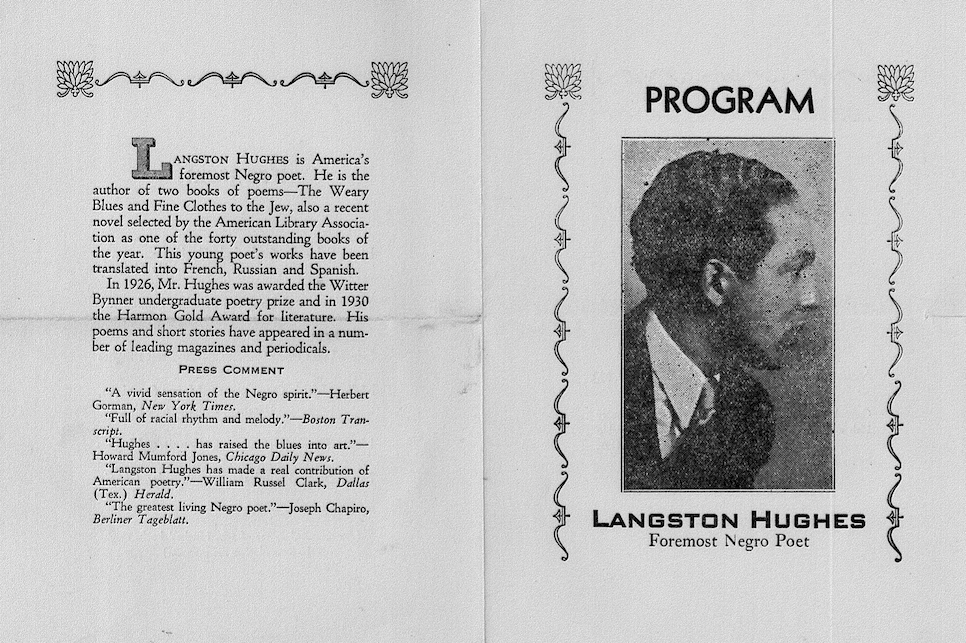
Matt Crawford Papers, Emory University, Atlanta.
Born in Alabama, Crawford had spent his formative years in Oakland, California, where his family moved in 1911 and were active participants in the small Bay area Black community He attended public schools in Oakland, graduating from Oakland Vocational High School, and then from the San Francisco College of Chiropractic and Drugless Physicians in 1927. He had begun his chiropractic medicine practice and was active in the local NAACP and Phyllis Wheatly Club as well as the Acorn Club when he hosted Hughes. He would also subsequently join Hughes and Miller on their Russian film-making excursion soon to unfold.
On May 15, Hughes arrived at Noel Sullivan’s home, at 2323 Hyde Street, San Francisco, at the peak of Russian Hill, beginning an association that would benefit Hughes greatly over the next few years especially; it would be Sullivan’s Carmel cottage “Ennesfree” that Hughes would call his own for most of the 1933-34 time he was, essentially, a California resident.
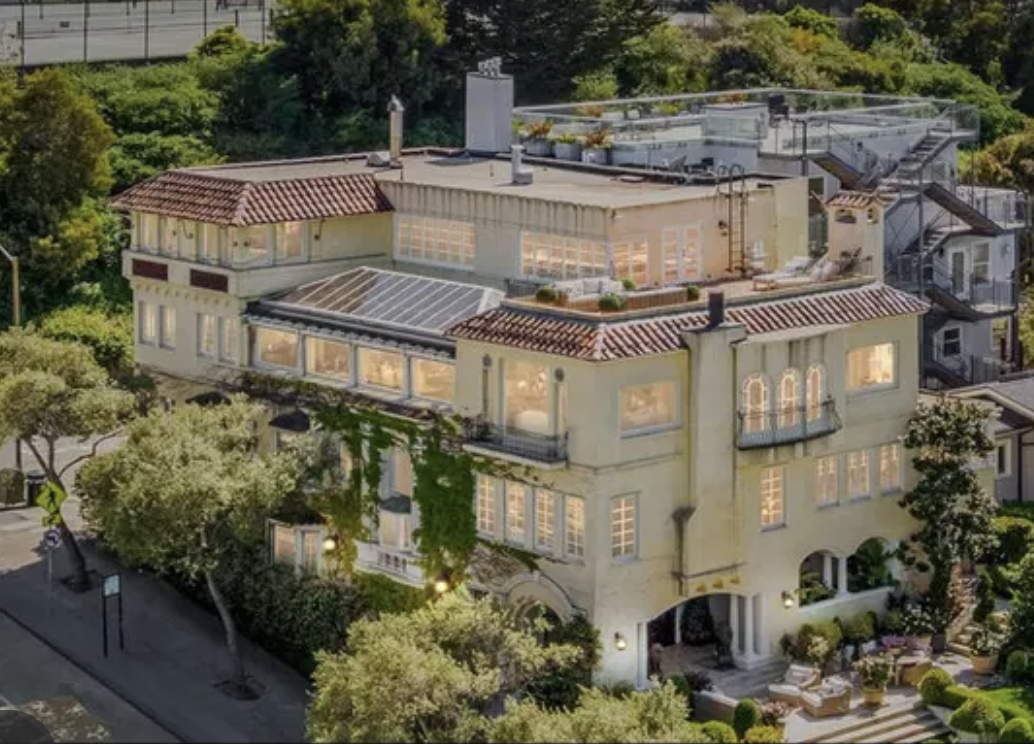
Built about 1900 by Robert Louis Stevenson’s widow, Noel Sullivan’s San Francisco home recently sold for $6.75 million
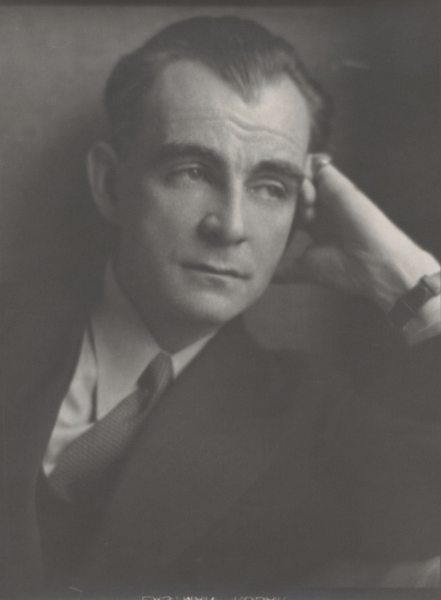
Noel Sullivan portrait by Johan Hagemeyer
For the next couple of weeks, Hughes enjoyed Sullivan’s hospitality and the beginnings of an active West coast social life.
He attended a traveling production of Green Pastures at the Columbia Theatre (147 O’Farrell Street), lectured on poetry for the Dumas Club at the Sutter Street YWCA (newly constructed in 1932 at 1830 Sutter Street, now the Japanese YMCA), and traveled to Portland and Seattle for additional readings.

Langston Hughes portrait by Edward Weston, Carmel, 1932. National Portrait Gallery, Washington DC
Hughes first came to Carmel-by-the-Sea for a June 1 reading of his poems sponsored by the local John Reed Club. Sullivan, a classically trained basso profundo, sang, and hosted Hughes at his cottage, Ennesfree (at the corner of 13th and Carmelo streets). Ella Winter, the activist wife of Lincoln Steffens–both integral parts of Carmel’s renowned arts scene–ran the meeting. The next day, he visited Steffens, whom he’d soon be calling “Steffy,” and Winter, with whom he’d co-write the 1934 play Blood on the Fields (at the corner of San Antonio Street & Ocean Avenue), and Robinson Jeffers and his wife, Una, at their seaside Tor House, where another local artist, Edward Weston, stopped by to take Hughes’ photo.
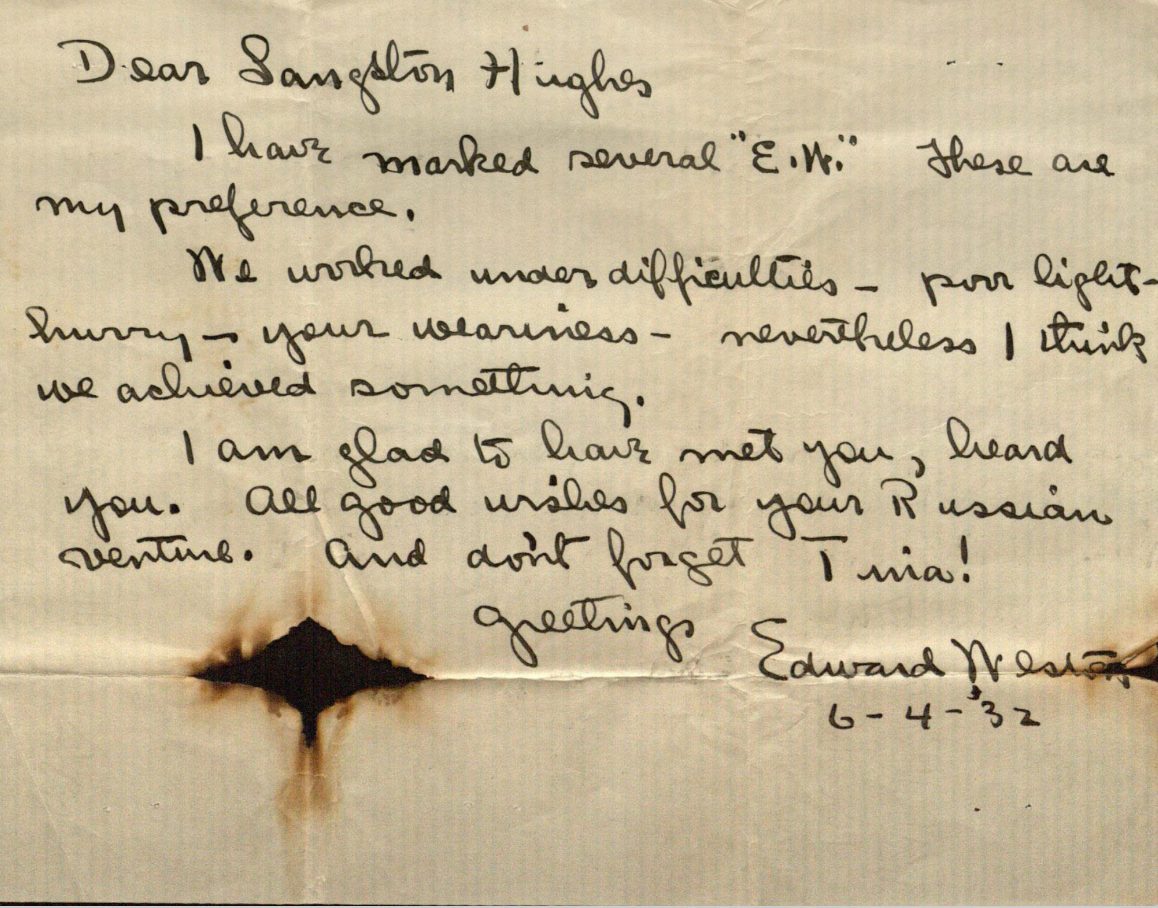
Edward Weston Bibliography Blog

Launched in 1930, the German ocean liner Europa usually crossed the Atlantic in about 5 days; Hughes’ voyage lasted 8 days.
On June 3, Hughes headed back to Los Angeles, where he ended his tour with a reading at Cain A.M.E. Church. On June 4, he left on another cross-country drive to New York, this time with fellow John Reeders Loren Miller and Matt Crawford, who were joining him on an upcoming visit to the Soviet Union organized by the Black communist leader James W. Ford to make a film about racial conditions in the South. In a stack of previously unopened mail, Hughes found copies of his newest book, Scottsboro Limited: Four Poems and a Play in Verse (Golden Stair, 1932), which his friend Prentiss Taylor illustrated. He wired Taylor from New Mexico that it was the “most beautiful book I have ever seen.” On June 14, he, Loren Miller, Matt Crawford, and 19 others in a loosely organized film crew were on board the Europa sailing 3rd class for what would become for Hughes a year-long round-the-world journey.

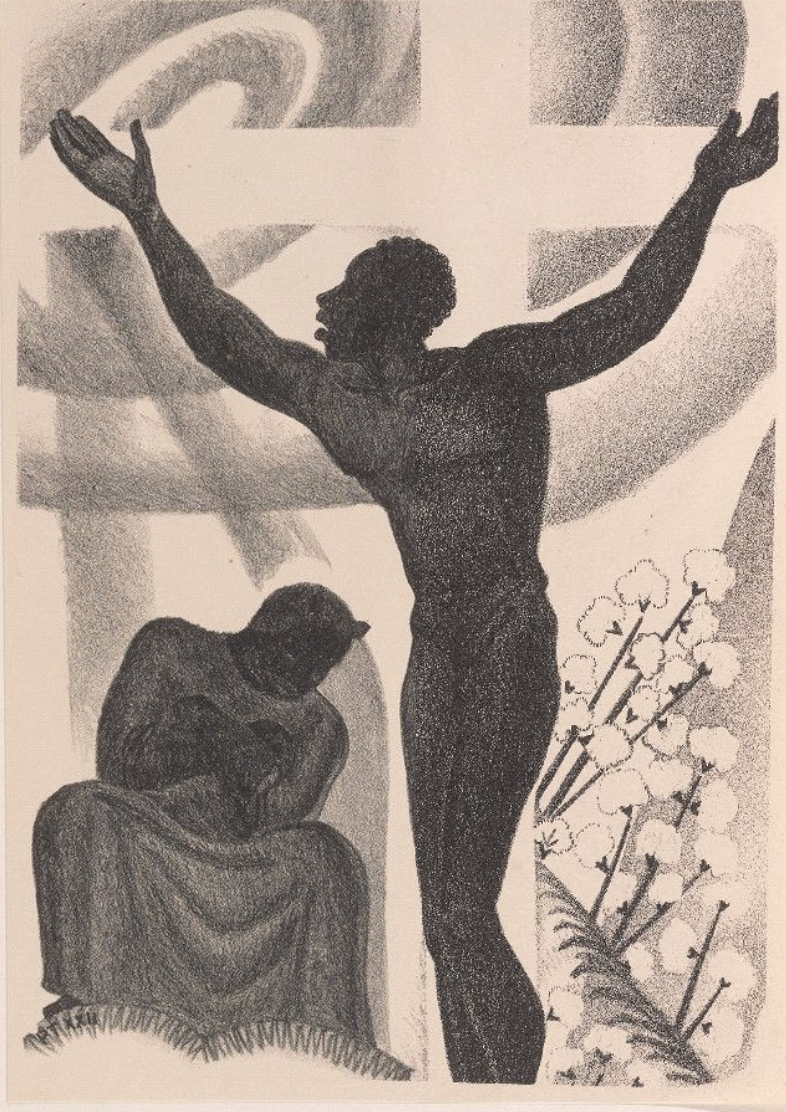
One of 4 lithographs by Prentiss Taylor illustrating Scottsboro Limited. Langston Hughes Papers, Beinecke Library, Yale University.
• • •
1933
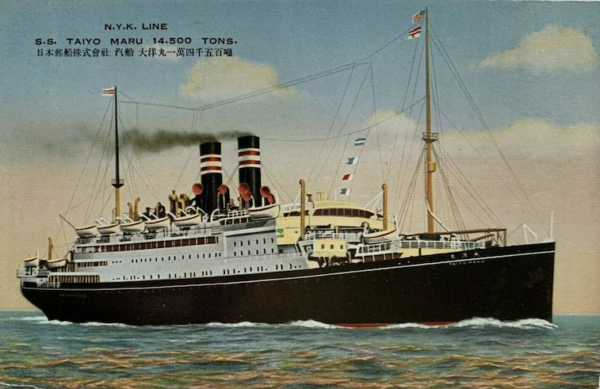
Launched in 1911, the Taiyo Maru carried the 1932 Japanese Olympic team to Los Angeles and, in 1933, it brought Hughes home from Japan. It was sunk early in World War II while carrying Japanese troops.
Aug 9
At the end of his round-the-world adventure, Hughes arrives in San Francisco on the steamer Taiyo Maru and is taken by Noel Sullivan’s chauffeur to his Russian Hill mansion to stay while arrangement are being made for Hughes to go to Ennesfree for a year with free groceries, rent, a cook, and the German shepherd Gretel. He spoke at and attended two meetings of the Northern California branch of the National Committee for the Defense of Political Prisoners, As he began to catch up on the rising tensions between labor and management in California’s fishing, agricultural, and shipping industries, he expanded his political interests from unjust incarceration to economic exploitation and in the process moved far enough to the left that he within a year he would become known around Carmel as a dangerous Communist.
Sept 1
Hughes arrives in Carmel to begin his Ennesfree residency and quickly becomes part of a social scene of artists and intellectuals already radicalized and ready to join in support of local fishing and agriculture workers as well as with Hughes’ Scottsboro cause. Noel Sullivan had introduced Hughes to several of them in 1932: Lincoln Steffens and his wife, Ella Winter; Robinson and Una Jeffers; Marie de L. Welch, and Ansel Adams, all world travelers and locally associated with the John Reed Club.
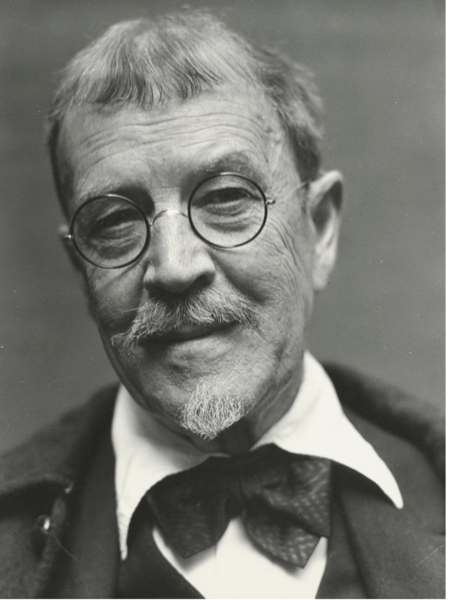
Lincoln Steffens portrait by Edward Weston, Carmel, 1933. Edward Weston Bibliography Blog.
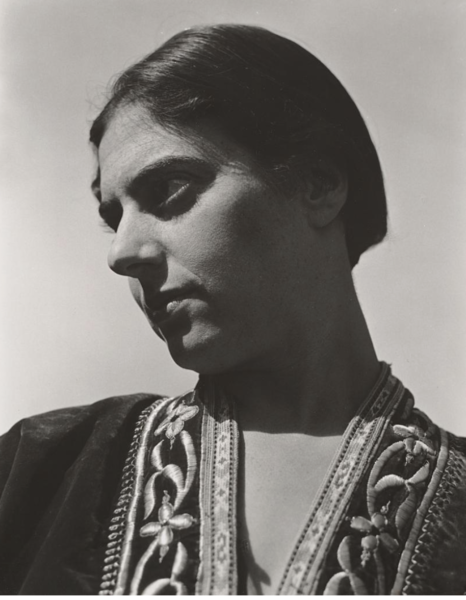
Ella Winter portrait by Edward Weston, Carmel, 1933. Edward Weston Bibliography Blog.
Lincoln Steffens was their elder spokesperson. Born in 1866 in San Francisco, he was a notorious muckraker known for his early 20th century work exposing political corruption New York, and his coverage of the Mexican Revolution (1917-1920) and the Russian Revolution of 1917 further radicalized him. After a trip to Russia in 1919, he wrote a friend, “I have seen the future, and it works.” He lost favor with American audiences in the 1920s, but his Autobiography (Harcourt, 1931), had returned public attention to him and his early work. He fell iin love with Winter, who was 32 years younger, after they met in Paris, and they married in 1924. She describes their move to Carmel in 1928 as accidental. Together, they helped found, also in 1928, the Carmelite, a weekly newspaper that added an aggressive, arts-oriented voice into a community that already had two weeklies. The Sun and the Pine Cone would later editorialize against Hughes and his friends. Winter, like Steffens, admired the Russian way, and her Red Virtue: Human Relations in the New Russia (Harcourt, Brace, 1933) helped make the couple a perfect match for Hughes, who would be working on his own Russian-experiences book while in Carmel. Their open marriage scandalized some in Carmel: they continued to live as husband and wife with their son, Peter, after their 1929 divorce. She famously once claimed to have “slept with 99 Negroes,” to which Steffens quipped, “Why not make it 100?” Some gossip at the time linked her to Hughes romantically and went so far as to suggest that his trip to Reno had been to get a divorce from her. Such a scenario seems unlikely but perhaps understandable given the many hours she and Hughes would spend together working on their play, first called Harvest and later Blood on the Fields.
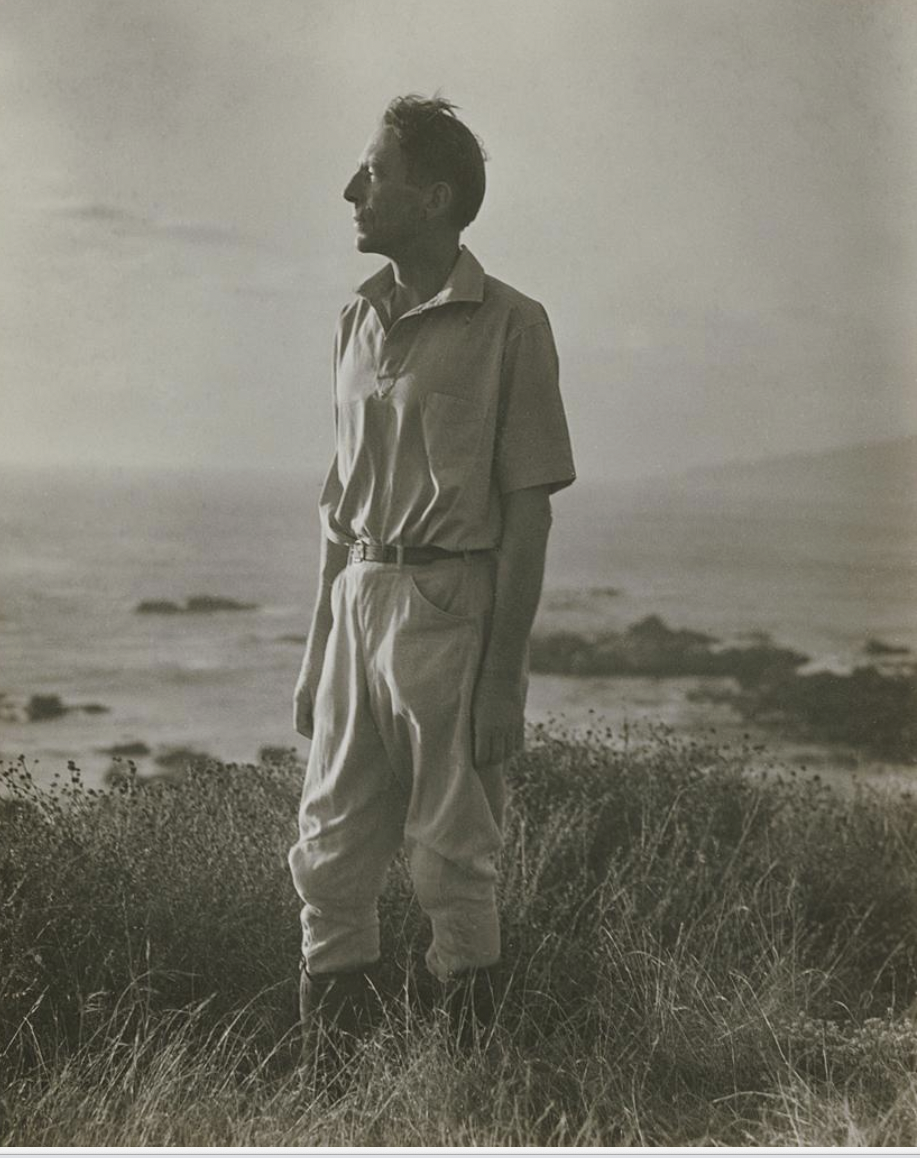
Robinson Jeffers portrait by Sonya Noskowiak, Carmel, 1935. She studied photography with Edward Weston for 3 years before her first show, in Carmel, in 1933. Center for Creative Photography.
Robinson Jeffers, a Pennsylvania native, was 16 when his family moved to California. He met Una Call Kuster in a class on Faust at the University of Southern California, and they married in 1913. Jeffers was perhaps the most brilliant of Carmel’s many intellectuals and artists. After USC, he went to Switzerland to study philosophy, was admitted to USC’s medical school but went to the University of Washington to study forestry instead. They were attracted to Carmel because of its rugged and elemental beauty, and also by its arts community. He and Una moved there in 1914. He apprenticed himself to a local stonemason and they began building Tor House in 1918, hauling the stones by horse from a cove below the craggy knoll on which it was built at Carmel Point. After its completion the next year, he built Hawk Tower next to it and later added a bedroom to Tor. Neither had electricity.
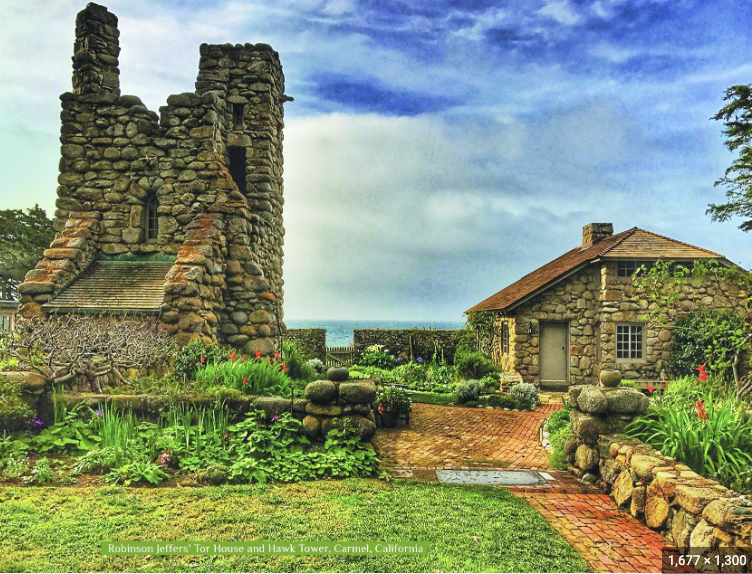
Tor House & Hawk Tower
Jeffers’ bleak and severe vision–he created the word “inhumanism” to help describe his belief that the world would be better off without humans–seems at odds with Hughes’ hope and humor, but it was a popular antidote for some during the Roaring ’20s. He made the cover of Time magazine in 1932 but his dark, naturalist poetry soon after fell out of favor.
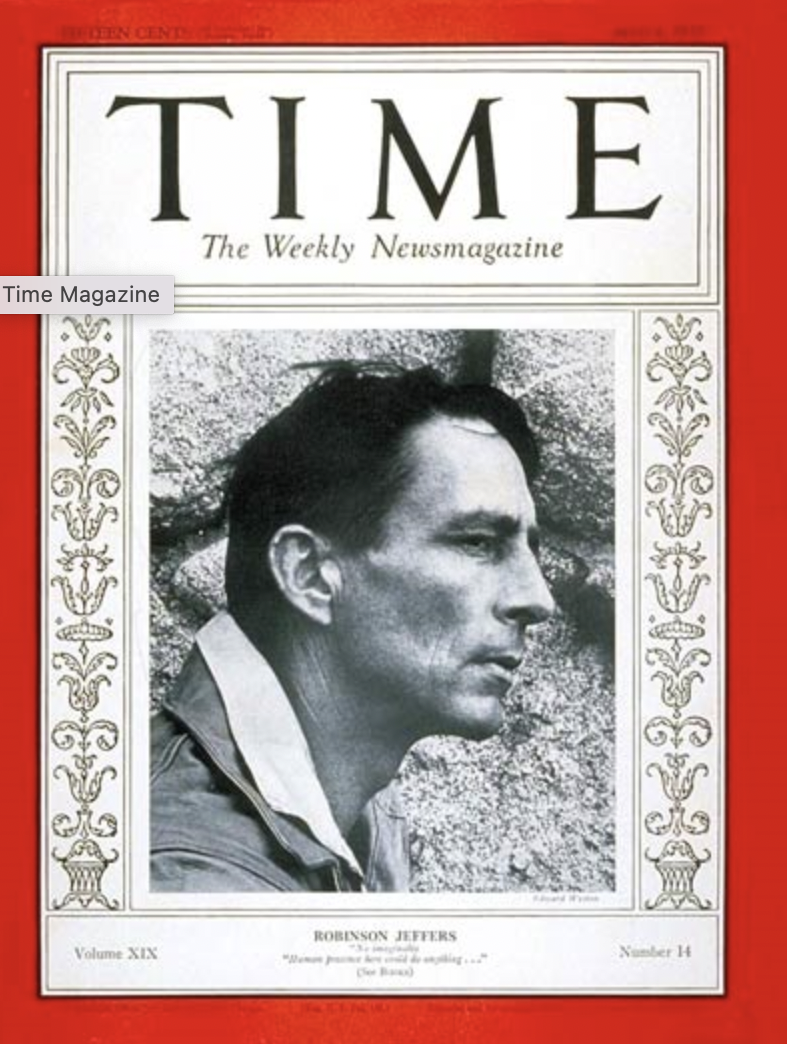
Edward Weston took Time’s cover portrait.
Marie de Laveaga Welch is today a mostly forgotten poet but when Hughes met her, she was still being celebrated locally for her first collection, Poems (Macmillan, 1933). She was on the editorial board of and contributed poems to the left-leaning Pacific Weekly, begun in Carmel in 1934. Lincoln Steffens “seized control” of it in 1936, asserting it was too conservative; he was its editor from June 1936 until his death two months later. [Hughes had at least one story in it but I’m still trying to locate the first two issues for on-line viewing & hadn’t realized Hughes’ connection until after trip to Yale; very little seems to have been done with it; a few issues easy to find on-line but all post-Hughes.]

Ansel Adams, born in San Francisco in 1902, documented the artist colony that lived in Carmel in the early 1930s as he was coming to national prominence. While living in Carmel, he and Edward Weston, whom he met in 1927, helped form the f/64 group in 1932; he eventually built his own home and studio there.
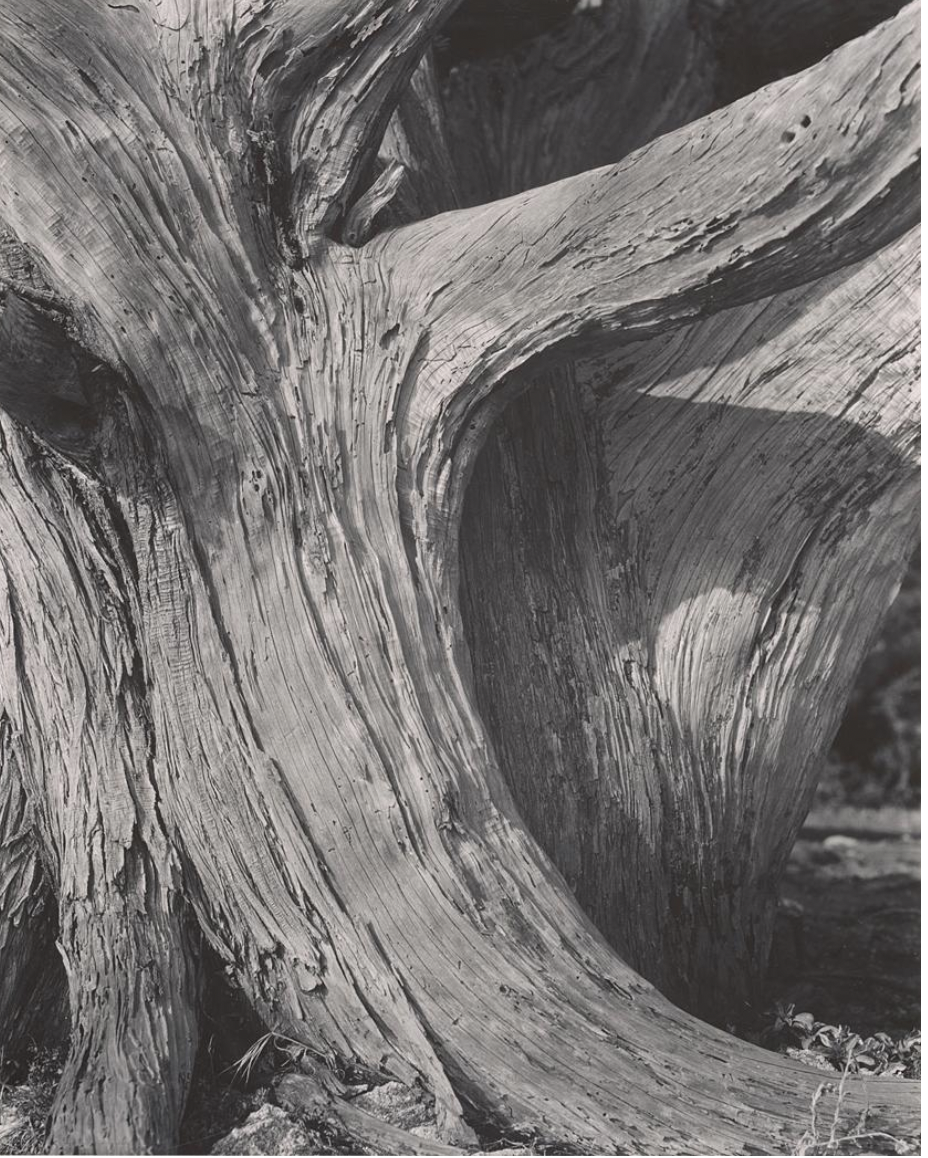
Carmel Cypress by Ansel Adams. Ansel Adams Bibliography and Blog.
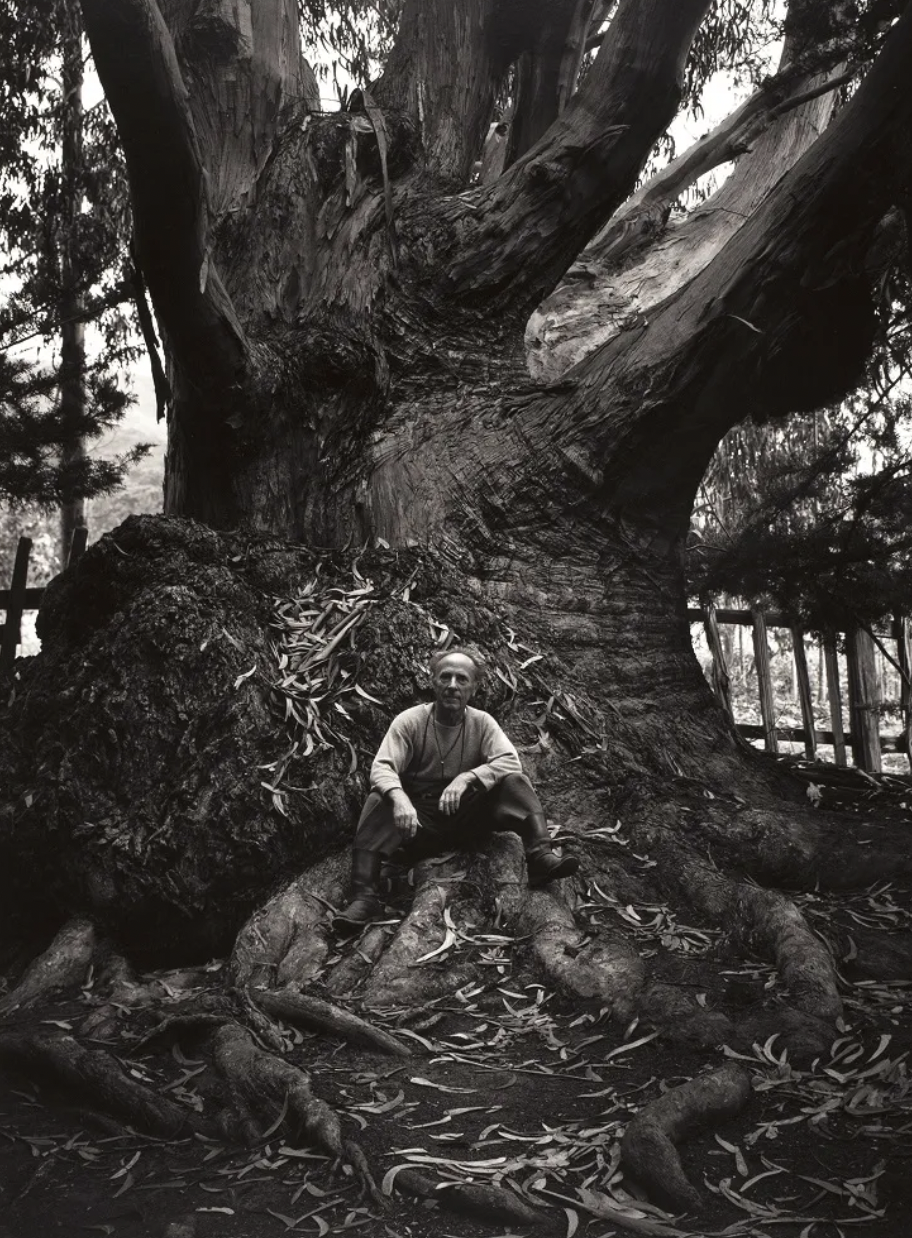
Edward Weston portrait by Ansel Adams at Carmel. Ansel Adams Bibliography and Blog.
Sept 18
San Joaquin Valley Cannery & Agricultural Workers Industrial Union calls for a general strike after 2 workers are killed by vigilantes, an incident that becomes the basis for the Hughes-Ella Winter collaboration Blood on the Fields.

Cherry pickers on strike, by a once known artist. California, 1933.
Oct 22
Lectures at the local John Reed Club meeting on Soviet Asia, with an introduction by Lincoln Steffens.
Soon after, in a 3-car caravan led by Noel Sullivan, Hughes, Winter, Marie de L. Welch, and others travel to Visalia and Corcoran, Calif., to meet strikers and their leader, Caroline Decker.

Carmel Pine Cone 20 Oct 1933: 5.
Oct 24
In support of fisheries workers, Hughes and others go on a sardine run out of Monterery on the Amazon.
Nov 17
Writes to Jean Toomer requesting a donation for the Scottsboro defense fund.
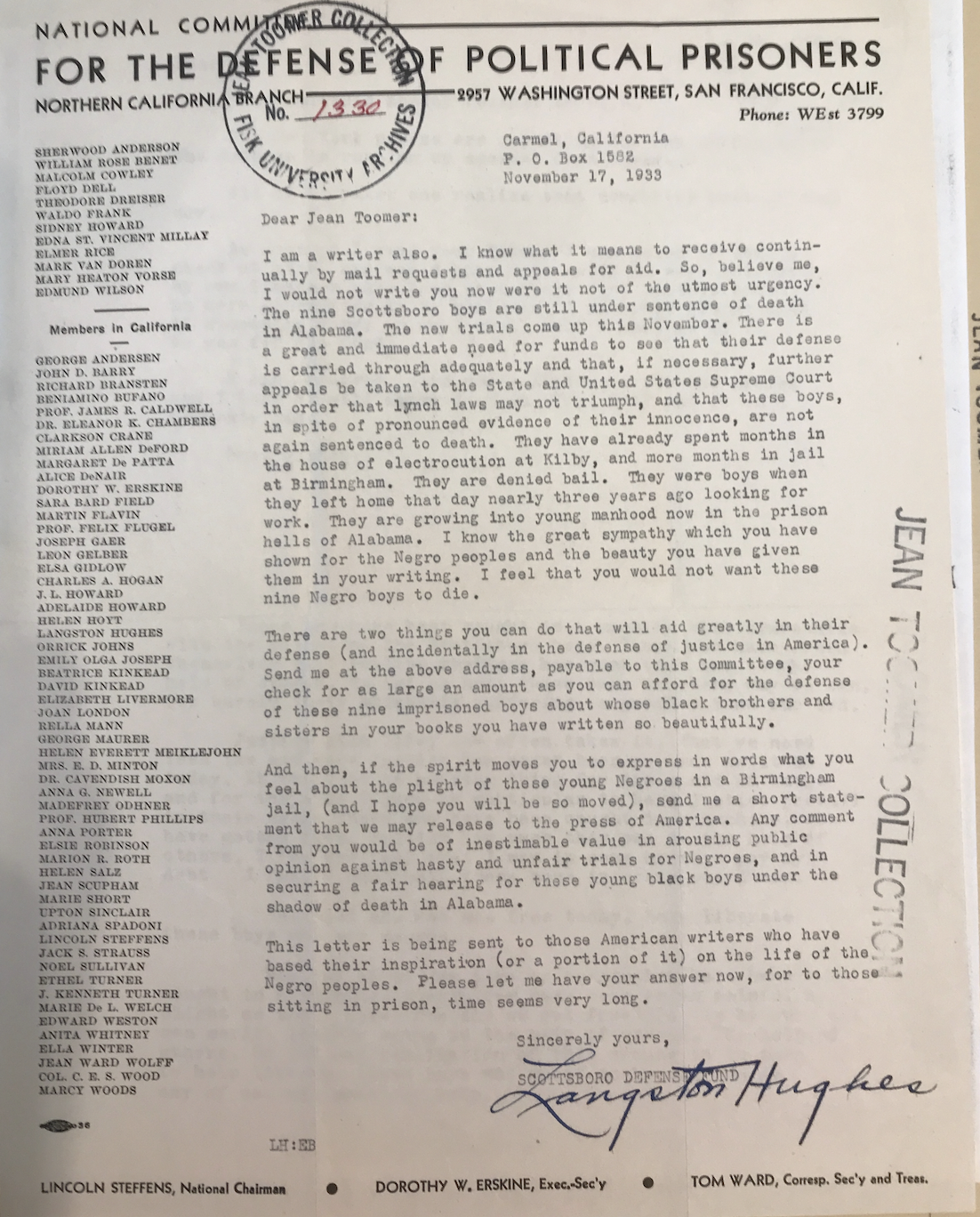
Langston Hughes Papers, Beinecke Library, Yale University
December 1933 events are from Rampersad; none are noted in the Carmel Pine Cone.
Dec 2
Beats a drum in a parade to promote the next day’s anti-war rally in Carmel.
Dec 3
Speaks at anti-war rally, Carmel.
He’s soon after diagnosed with a severe ulcer. After speaking on the Scottsboro Boys in Carmel, decides to solicit for an auction for their benefit, under the auspices of the Committee for the Defense of Political Prisoners.
Dec 7
Sends the manuscript for his short story collection The Ways of White Folks to Knopf.
Dec 23
Participates in another anti-war rally in Carmel.
Dec. 24
Christmas party with Noel Sullivan in Carmel.
Dec. 25
More Christmas parties: with Sullivan, Lincoln Steffens and Ella Winter; and with Carl Harris’s family.
• • •
1934

Carmel Pine Cone, Dec. 29, 1933: 10.
Through the the early 1930s, Hughes was seldom without something on which to jot down story ideas and sketches from his observations, but only in 1934 did he document his daily life, using a “time saver” day book he received as a ’33 Christmas gift. Text in the 1934 timeline in italics is transcribed from that notebook.
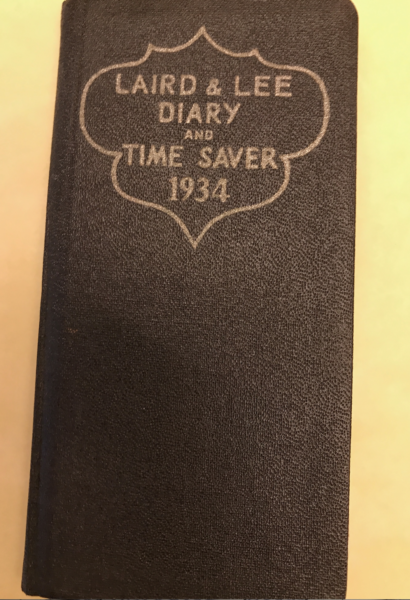
Langston Hughes Papers, Beinecke Library, Yale University.
1934 introduction
Hughes began 1934 with an optimism borne out by great successes with his short stories. His first Esquire short story, published in January, caused a sensation that was promoted by the magazine to increase readership with its controversial subject matter, and placed him securely among the forefront of contemporary American writers.
Throughout the year, he would continue to work diligently on an impressive number and variety of story projects–his experiments with writing “White” stories while he stayed in Reno among them–while also maintaining an active social life and an increasingly time-consuming one as a political activist, concerned with the Ssottsboro Boys nationally and the California growers locally and regionally. Hughes’ great success in Esquire was a result of his talent, which was proving an equal to the writers who had been recruited to give it legitimacy, and the talent and connections of his young agent, Maxim Lieber. Launched in September 1933, Esquire had successfully solicited stories and articles by Ernest Hemingway, John dos Passos, Dashiell Hammett and Erskine Caldwell. Lieber represented Caldwell and several other prominent young White short story writers, including Nathanael West and Thomas Wolfe. Hughes, more than all of them, took to Lieber’s Leftist interests; Lieber was integral part of Hughes’ early 1930s involvement with Communist publications such as New Masses , Crisis, Opportunity, and New Anvil and the national network of John Reed Clubs, whose Carmel branch Hughes helped to organize.
So when he sought refuge in Reno in October, Hughes was enjoying some financial successes from his writing, which was greatly encouraged by Lieber, who had sold Hughes first collection of stories, The Ways of White Folk, to Knopf; it was published in May 1934 to good reviews and sales. But he was also experiencing potentially dangerous threats that came from a mix of antagonisms he had managed to further in Carmel: from his John Reed club and labor organizing activities; his controversial writings; the unusual numbers and personalities of the guests–many of whom were Black–who visited him in Carmel; and rumors of his relationship(s) with White women.
Outside Carmel, most of the resistance he would feel came from several controversial poems, and within a few years, as Communism became increasingly vilified nationally, Hughes would embark on a long and somewhat unsuccessful campaign to wrest his name from those activities, a severing made especially difficult by some of his most political poems, and which wasn’t helped by his awkward testimony before the House on UnAmerican Activities in 1953, when he was still trying to repudicate or at least explain some of his most offensive poems.
For example, he wrote “Christ in Alabama” in response to the Scottsboro case; it begins:
Christ is a Nigger,
Beaten and black–
O, bare your back.”
He also parodied Carl Sandburg’s sunny, optimistic, and popular “Good Morning, America”:
Good Morning, Revolution:
You’re the very best friend
I ever had.
“Good Bye, Christ” upset Aimee Semple McPherson so much that she organized a protest that prevented a Hughes reading in Los Angeles in 1940. Its first stanza:
Listen, Christ,
You did alright in your day I reckon–
But that day’s gone now.
They ghosted you up a swell story, too,
Called it Bible—
But it’s dead now.
The popes and the preachers’ve
Made too much money from it .
• • •
Langston Hughes’ Diary and Time Saver 1934
Langston Hughes documents 1934 on a daily basis better than any year of his life., thanks in large part to Noel Sullivan’s generosity in providing Hughes a year’s time and space for writing, and to the Laird & Henry Diary & Time Saver 1934 he received for a Christmas gift.
The transcription below includes month & date with Hughes’ entry in italics, a “0” for dates that have no entries, and annotations that offer some further contexts.
The original Diary and Time Saver is at Beineke Library, Yale, in the Langston Hughes Papers.
Jan 8
Roy Blackburn arrives to begin work. Tea at Steffens’.
Part of Hughes’ plan to make 1934 “an especially productive year” was to hire a secretary, and Roy Blackburn, “handsome, brown-skinned, and 22 years old,” got the job. Blackburn told Rampersad that he arrived in Carmel on New Year’s day to apply: “I didn’t have an invitation, or even an address, but I had his box number. Those were hard times. I took the bus down from Oakland and went to the post office to find out where he lived.” [Rampersad 1: 284] Blackburn and Hughes signed a formal agreement for him to work for 6 months for room and board and 20% of the net income from “all stories, articles, and poems written in the following six months, exclusive of books published or plays sold.”
Jan 9
Worked on “Berry”
Greta mates with Shawn.
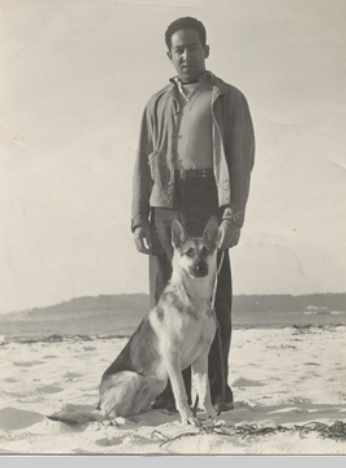
Langston Hughes and Greta, Carmel, by a once known photographer.Jan 11
Jan 12
Roland Hayes concert at Sunset School auditorium, Carmel, a replacement concert in a 4-part series sponsored by the Carmel Music Society. The Pine Cone called it a “thoroughly worthwhile program,” and that Hayes had “refinement, finish, and beauty in every tone.” [PC 12 Jan 34: 4] Hayes contributed 1/4 of his fee to the Scottsboro defense fund. [PC 12 Jan 34: 3] Hughes writes in his memoir that Hayes “spent several days with me” but doesn’t mention him in his daybook.
Jan 13
Mailed off “Berry” and “In all the World” to Lieber.
Jan. 14
Poems prepared for “New Masses.”
Jan 16
NAACP Emancipation program at church in Monterey; dinner at Fisher’s.
Hughes and Senator E.H. Tickle were the speakers in the program held at First Baptist Church of Pacific Grove, 4th & Laurel. The Tickle Pink Inn in Carmel is on the site of the Senator’s home, which he and his wife called “Tickle Pink” for her love of pink flowers. Dinner was prepared by the “well-known chef” Harry Williams. [PC 12 jan 34: 3]

Carmel Pine Cone 12 Jan 34: 3. Also in this issue a Weston profile by Winsor Joselyn.
Jan 17
“The Patriots” shown at Carmel Theatre. Roy meets Bill & Mr. Sullivan.
The Patriots (1933) produced in Russia and shown with English subtitles, was set in a Russian village during World War I. It was later re-titled as Outskirts.]
Jan 21
Went to San Jose for anti-lynching rally in park. Ruth & Cleo in evening. Bed 2 a.m.
Writes the poem “One More S in the USA” and is named President of League of Struggle for Negro Rights, whose pamphlet on the Scottsboro Boys includes woodblock illustrations by Anton Refregier.

Anton Refregier also contributed art to the upcoming auction to benefit the Scottsboro boys.
Jan 22
Roy‘s birthday. To show with Percy & Foster girl to see Etta Moten in Gold Diggers of 1933. (Moten sang “My Forgotten Man,” in a duet with Joan Blondell; her first teaching job was at Lincoln University, where Hughes graduated in 1929.] Mailed “R. Thru Joy” off to agent.
Jan 25
Rev. Smith of Monterey calls.
Jan 26
To Monterey with Perce for haircut. Supper at Percy’s.
Jan 27
To play “9 Pine Street” and to party at Mrs. Alston’s. Home at 3:33.
Jan 28
Roy goes to city. Beach party with Shorts.
Jan 30
“Why You Reckon” mailed to agent
February 1934
Feb 1
Birthday party & picnic at Big Sur with Una & Robin [Jeffers], Noel [Sullivan], Roy, Bill, Eve, party with champagne.
Feb 2
To dinner of ham & greens at Ruth Dare’s, Percy, Willa, Ella, Cleo and Roy. Home at 1 a.m.
Feb 3
Jean & Saxton Pope came by & took Bill to Santa Barbara. Went to hear Gerseking at School auditorium.
Feb 4
Foster & Smith girls come by–snap shots. To Jackson’s & Valentin’s party at Peeble [sic] Beach. Terry & Ruth came to house too.
Feb 5
Saw “Flying Down to Rio.” Posted “The Sun” to Lieber.
Feb 6
Ran to beach and exercised in morning.
Feb 7
Gibson girls, Lois & Thelma, failed to show up at Roy’s invitation. Basement to work.
Feb 9
Thelma & Lois came in eve. Long drive in moonlight up Carmel Valley.
Feb 10
Roy leaves for Oakland with Gibson girls.
Feb 11
Karl Hamm arrives. Speaks at Greene’s studio. Roy returns early a.m.
Feb 12
Saw Cagney in “Lady Killers”
Feb 13
Worked
Feb 14
Dinner at Al Byrd’s & Larry’s. Club meeting.
Feb 15
Dinner at Karl’s. Poker game until 1 a.m. Lost $3.50
Feb 17
Begin to read “Red Virtue” by Ella Winter
Feb 18
Worked
Feb 19
Dinner with Mary Gerstle at Marie Short’s.
Feb 20
To Monterey for hair-cut. Ruth, Willa, and Percy came by in eve.
Feb 21
Preview for upcoming auction is held at Noel Sullivan’s Russian Hill home in San Francisco.
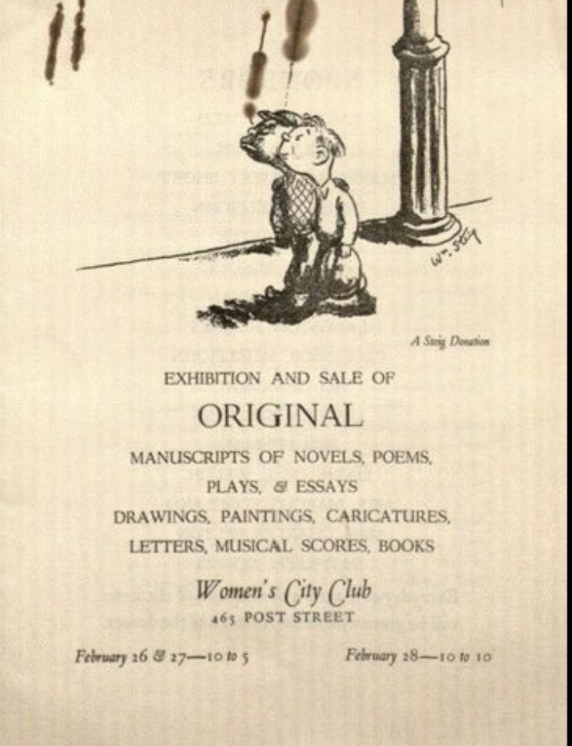
Langston Hughes Papers. Beinecke Library, Yale University.
[Below is a list of auction items. This appears to be a near final inventory of the items included in the exhibit and sale although it is not clear whether some on this list made a material contribution to the auction.]
PAINTINGS, LITHOGRAPHS, DRAWINGS, etc.
1. Boynton, Ray / water color, ‘Carmel Mission’
2. Boynton, Ray / charcoal drawing, ‘Landscape’
3. Boynton, Ray / water color, ‘Landscape’
4. Cagney, James / pen and ink sketch, [typed but struck through:] ‘Steffie’ [handwritten insertion, in pencil:] Gorky
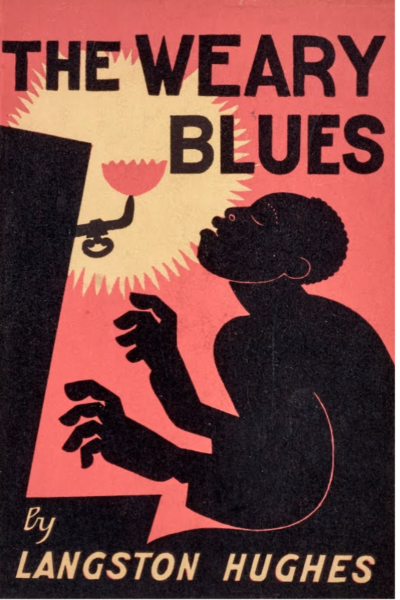
Covarrubias created the cover for Hughes’ first book of poetry, published by Knopf in 1926
5. Covarrubias / cartoon, reprint, signed, ‘W.C. Handy’
6. Davidson, Jo / crayon drawing, ‘Dancer’
7. Davidson, Jo / pencil drawing, ‘Nude’
8. G’ag, Wanda / original drawing for ABC BUNNY, ‘F’ is for Frog’
9. W.C. Handy / 3 photographs signed
10. Hine, Lewis / Photograph, ‘One Mile From Daylight’
11. Lozowick, Louis / Lithograph
12. Palmer, Peggy [also known as Peggy Burrows] / water color, mounted and framed, ‘Le Bibliophile’
13. Refregier, Anton / 4 drawings / ‘Fisherwoman’ – pencil / ‘Lake’ – water color ‘N.Y., 1928’ – crayon / ‘Strike’ – water color
14. Seymour, Ralph Fletcher / Etching, ‘Luck with Alcario’
15. Sheridan, Joseph / pastel, ‘Gaity’ [From Illinois, studied art with Hans Hoffman at the University of California, Berkeley, and with Alexander Archipenko at Mills College in Oakland.]
16. Shore, Henrietta / mounted lithograph, ‘Indian Woman and Child’ [Interesting Southwest images, weird portrait of Weston here]
17. Shore, Henrietta / 2 lithographs, ‘The Women of Oaxactl’
18. Steichen, Edward / mounted photograph, ‘Magnolia’
19. Steig, William /original drawing
20. Reprint of drawing — Steig
21. Wesselhoefft, Mary / Mounted poster, ‘Industry Bound’
22. Wesselhoefft, Mary / Water color, ‘Still Life’ / [p. 2:] / PAINTINGS, LITHOGRAPHS, DRAWINGS, etc., page 2.
23. Weston, Edward / 5 photographs / ‘Robinson Jeffers’, signed by Jeffers, inscribed to Scottsboro Boys / ‘D.H. Lawrence’ / ‘Lincoln Steffens’, signed by Steffens / 2 Still Life Photographs, signed by Weston, inscribed to Scottsboro Boys
24. White, Margaret Bourke / 13 mounted photographs /
25. Wood, Stanley / Water color, 16” x 20”, ‘The House at Cannery Cove’
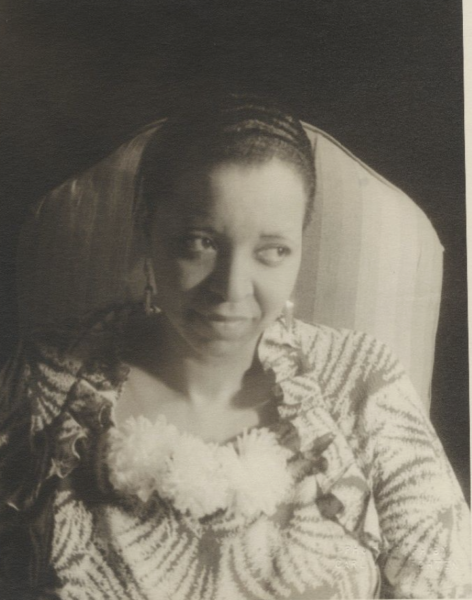
Ethel Waters by Carl van Vechten June 22, 1933. Carl van Vechten Papers, Beinecke Library. Yale University.
26. Van Vechten, Carl / 9 photographs of Ethel Waters, signed by Waters and van Vechten
27. Wilson, Barbara / pencil sketch of a Negro worker, in a frame 18” x 21” [no details on her]
28. Young, Ralph / photograph, ‘Line and Form’ [1 online image, no bio details other than being from Cali.]
29. Ward, Lynd / 4 woodcuts
30. Block, Julius / 2 lithographs [lots of work published in New Masses]
31. Kanaga, Consuelo / 2 photographs, Negroes.
32. Hagemeyer, Johan / photograph, ‘Robinson Jeffers’ / Photograph, ‘Hands.’ [Carmel resident, split with Weston over whether photos could be edited or not; 6,000+ of his photos at Bancroft Library, UC-Berkeley, including portrait of Noel Sullivan above.]
33. Hagemeyer, Johan / photograph, ‘Bust of Jeffers by Jo Davidson’ [Creation of this bust in Carmel created a minor sensation.]
34. O’Shea, John / Black and White [His wife inherited 10 acres in the Carmel Highlands, California, where they built a stone mansion that they named “Tynalacan.”]
35. Noskowiak, Sonia / Dunes of Oceano [A student of Hagemeyer who sided with Weston who did not think photos should be edited.]
MANUSCRIPTS
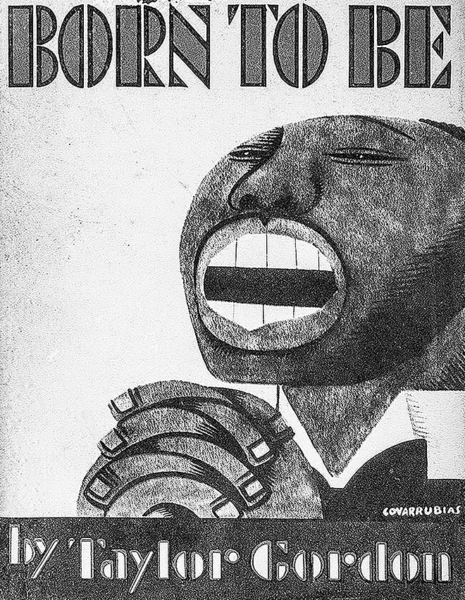
Taylor Gordon’s autobiography, published in 1929, with cover by Covarrubias
1. Gordon, Taylor, Negro playwright / ‘Ziogaboo Dream’, typewritten script, 292 pp. [Gordon is better known as a Harlem Renaissance performing partner of J. Rosamond Johnson; prior, he was John Ringling’s personal valet, traveling the U.S. in Ringling’s private railroad car.]
Hicks, Granville, American critic / ‘The Great Tradition’, first draft, April, 1931–Oct., 1932, typewritten. 300 pp, signed [Published in 1933, The Great Tradition was a Marxist reading of American literary history from the Civil War to present .]
3. Conroy, Jack, American author / ‘Rubber Heels’, typewritten script of a short story, part of the novel ‘Disinherited’ 26 pp, signed. [The Disinherited was published in 1933. As editor of The New Anvil, published Hughes. Conroy’s papers are at Newberry Library, Chicago.]
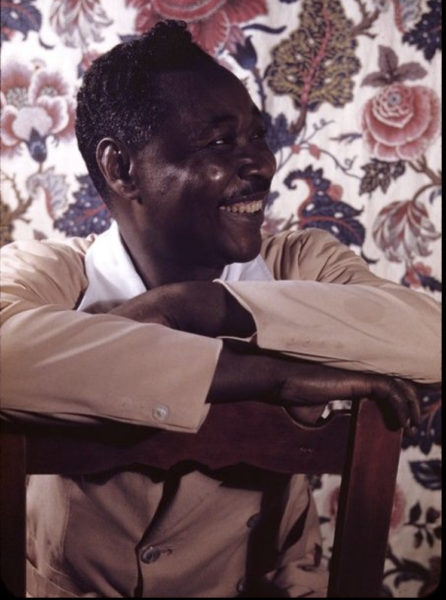
Claude McKay portrait by Carl van Vechten 1941. Beinecke Library, Yale University.
4. McKay, Claude, Negro poet / ‘Cities’, typewritten script with corrections, signed
5. Dos Passos, John, American author / ‘Passport Photo’, hand-written script, signed, 4 pages–portion of a forthcoming book ‘In All Countries’
6. Boyd, Thomas, American author / Original manuscript, typed, with corrections in handwriting, short story, 11 pp
7. Stacy, Walt / ‘Southern Mill Town’, typewritten script of a poem, signed. 2 pp / [p. 3:]
8. Welch, Marie de L., San Francisco poet / Original script of two poems, signed — ‘Shanty’ and ‘Harvests’ 2 pp
9. Powys, Llewelyn / Original manuscript of a poem, signed. 1 p

Countee Cullen portrait by Carl van Vechten 1941. Beinecke Library, Yale University.
10. Cullen, Countee, Negro poet / Original manuscripts of two poems, ‘Sleep’ and ‘Sonnet’, signed. 2 pp
11. Kreymborg, Alfred, American poet / ‘Red Chant’, poem, typewritten script, signed. 1 p
12. Bontemps, Arna. ‘Saturday Night’ Huntsville’, short story, typewritten script, signed. 5 pp [Portrait of him by Carl van Vechten above.]
13. Anderson, Sherwood, American author / Original manuscript, 6 pp
14. Leonard, William Ellery, American poet / Author’s manuscript of last section of ‘The Lynching Bee’, signed poem. 2 pp
15. Boyd, Ruth Fitch / ‘Scottsboro, 1933,’ a poem, signed manuscript. 1 p
16. Mumford, Lewis, American critic / ‘The Task of Modern Biography’, typewritten script of an essay, signed. 11 pp
17. Bynner, Witter, American poet / ‘Against the Cold’, signed pamphlet and a long poem
18. Deutsch, Babette, American poet / ‘To a Friend Who Fears Revolution’, typewritten poem, signed, 1 p
19. Gold, Michael, American author and critic / ‘A letter to the Author of a First Book’, typewritten script of a review. 4 pp, signed.
20. Waters, Jim / ‘Red Messengers’, typewritten poem, signed. 1 p
21. Young, Art, American cartoonist / Original manuscript of a letter to the ‘New Masses’, signed / 1 p, ‘Inferno’, signed copy
22. Strachey, John, English author / ‘Fascism in America’, typewritten article with corrections, signed. 7 pp / Also, one page of notes in his handwriting with corrections
23. Bontemps, Arna / Two poems, typed, signed — ‘Length of Moon’, ‘The Return’. 3 pp
24. Riggs, Lynn / 5 drafts of a sonnet, ‘Yet the Earth’, manuscript and type 5 pp
25. Locke, Alain, Negro critic / ‘The Poetry of Negro Life’, original manuscript of preface to ‘Four Negro Poets’, signed. 4 pp
26. Schomburg, Arthur / ‘Juan Latino, Magister Latinus’, magazine pages of an article, signed. 4 p
27. Coates, Robert M., American author / ‘Yesterdays’ Burdens’, a novel, complete typewritten copy, with author’s corrections signed. 181 pages. / [p.4:]
28. Halper, Albert, American author / ‘Chicago Side-show’, privately printed booklet, signed. 22 pp
29. Teasdale, Sara, American poet / Original manuscript of two poems, ‘Song’ and ‘Sonnet’, initialed. 1 p
30. Hoyt, Helen, American poet / ‘Apples Here in My Basket’, presentation copy of book of poems, signed. 78 pp
31. Gidlow, Elsa, San Francisco poet / ‘From Alba Hill’, privately printed poem, signed / ‘Criminal Class’, typewritten poem, signed
32. Ornitz, Sam, American playwright and Movie Director / Original draft of the first act of a play, ‘In New Kentucky’’ 70 pp
33. Older, Fremont, San Francisco editor and journalist / ‘The Pleasures of Commuting’, original manuscript of an article, signed. 6 pp
34. Dreiser, Theodore, American author / ‘Chief Strong Bow Speaks’, typewritten copy of a poem, signed. 2 pp
35. Scott, Evelyn, American poet / ‘Snow’, a poem, original manuscript, signed. 1 page
36. Strachey, John, English author / 1 page of the original manuscript of the ‘Menace of Facism, handwritten with corrections
37. Fishback, Margaret, American poet / ‘Shopgirl’s Complaint’, a poem, original manuscript, signed. 1 page.
38. Loos, Anita, American playwright / 1 page of the original manuscript of ‘Gentlemen Prefer Blondes’
39. Steffens, Lincoln, American author / ‘The Pines and the Borers’, 3 drafts of an original manuscript, fable, 12 pages, including final typewritten script /
40. Powys, John Cowper / ‘The Tragic Nineties’, complete manuscript of an essay, signed. 15 pages
41. Powys, John Cowper / ‘Detachment’, complete original manuscript of an essay, signed, 22 pages.
42. Steffens, Lincoln, American author / An original unpublished manuscript, signed, ‘It’s All News’. (published in ‘Partisan, No. 3’ 5 pages.
43. MacLeish, Archibald, American poet / ‘Seafarer’, a poem, original manuscript, signed. 1 page
44. Powys, John Cowper, / ‘The Moon Over Megalopolis’, original manuscript of a poem. 2 pages.
45. Ficke, Arthur Davison / ‘Nursery Rhyme’, a poem, typewritten script, signed. 1 page
46. Schneider, Isidor / ‘A Night in Late Winter’, original manuscript of a poem published, signed. 1 page. / [p. 5:]
47. Huxley, Julian / 3 poems; 2 manuscripts, 1 typewritten with corrections in handwriting. 3 pages
48. Steffens, Lincoln, American author / ‘John Reed’, a rare booklet, preface by Clarence Darrow, signed by both. 14 pages
49. Russell, Bertrand, English author / 3 short essays in his own hand, signed / ‘Intelligence vs. Cruelty’ 3 pages, ‘Respect for Law’ 3 pages. ‘The End of Intelligence vs. Cruelty’ 3 pages, ‘Respect for Law’ 3 pages, ‘The End of Pioneering’ 4 pages.
50. Jeffers, Robinson, American poet / signed manuscript of an unfinished poem — in pencil. 4 pages.
51. Wood, Charles Erskine Scott / Poem, ‘O Alabama’
52. Field, Sara Bard / Poem, ‘To the Master of the House’
53. Pound, Ezra / Letter
54. Langston Hughes
55. Williams, Albert Rhys
56. Darrow, Clarence
57. Hagemeyer — Portrait of Roland Hayes
58. John O’Shea — Negro head in charcoal [same as #34?]
59. Ralph Young — 2 Camera Studies
60. Frank Swinerton — Manuscript
61. Gertrude Athernon — Black Oxen, MS.
62. Katherine Norris — Manuscript
The 5-page typed list titled “PAINTINGS, DRAWINGS, PHOTOGRAPHS, ETC.” is in the Beinecke Rare Book & Manuscript Library, Yale University, James Weldon Johnson Collection, Langston Hughes Papers; JWJ MSS 26, Box 512, folder 12721: Series XIV. Personal Papers, Project Files; National Committee for the Defense of Political Prisoners (Scottsboro exhibition and sale.)
[End of auction inventory]

Langston Hughes Papers, Beinecke Library, Yale University
Hughes. considered the auction a success, but I can find no evidence of the second sale he mentions, nor an indication of what happened to the unsold items, such as the Elmer Rice manuscript referenced in this letter.
Feb 22
Wire to mother for birthday.
Feb 23
Noel & Bill arrive for concert.
Hughes speaks on the Soviet Union at First Baptist Church, Monterey [local Black church; Rev. Smith’s?]
Feb 24
Concert by Noel Sullivan for benefit of Scottsboro fund. Party at Greene’s studio
Feb 25
Met Church Peter and wife who brought Brother’s book about – – – [coastal area / reefs]? Tea at Mathias. Noel left that night
Feb 26
Revised book of proletarian poems and wrapped it for mailing to Knopf.
Feb 27
Up to answer letters and acct. contributions for Scottsboro sale.
Feb 28
To SF with Ella, Marie, Roy. Auction in eve with Cagney & Jousy [?] Speakeasy. Bed 4 a.m.
March 1934
Mar 1 Party at Geo. Johnson’s spokesman office. Ed Royce film idea. To Berkeley for dinner & reading at inter house.
Mar 2
Tea at Leslie Roos. Dinner Col. Wood, Mrs. Wood, Mrs. Field, Fernette. Home 3:30 a.m.
Mar 3
Ted Miller & Mrs Laphan evening on Filmore St. Party at Leland Hawkins. Home at 3:15 a.m.
Mar 4
Breakfast party at Mrs. Grey’s given by Glenn. Dinner Ed & Theo Best – Sausalito.
Mar 5
Mr. Cherin. Fun day at Coppas. Arrive Carmel at 6:30 with Chloe, Glenora & Roy
Mar 6
Poor little Chloe run over and killed by car on highway.
Mar 7
Chloe buried. Percy, his son, and Joe Guser came in evening.
Mar 8
Wrote lettrs. Dinner at Teresa Gates in Monterey.
Mar 9
Jacksons and Joe Guier came by. I wrote to father and aunts.
Mar 10
Roy & Joe go to Lois’ in evening. Me to bed at 9:30. In afteroon Harold Mason and party from San Mateo came by. Greta’s pups born.
Mar 11
Received wire [from] Noel that Greta has eight puppies – 3 female, 5 males.
Mar 12
Sent Pushkin poster to Lincoln. Surprise party for Mrs. Alston. Lecture on Negroes at study group.
Mar 13
Went for long walk along beach. River broke through and had to go 4 miles to get home.
Mar 14
Went to Monterey with Joe & Roy for haircut.
Mar 15
Young from Oakland was down.
Mar 16
$135 for New Yorker story. Jean Harlow in town.
Mar 17
Dinner for Minerva Porter at the Walters – Robin, Una, the Curtis’ were there.
Mar 18
Worked all day on Russia book
Mar 19
Worked
Mar 20
Met Mrs. Jo Davidson at Steffy’s
Mar 21
Moor of Imperial Valley strike arrives. Perc and girl friend down in eve.
Mar 22
To see “Wild Boys of the Road” and to lecture on Imperial Val. strike.
Mar 23
To see “Dinner at Eight”
Mar 24
Sent 5 articles to Lieber. Howard Bird & Harold in for dinner.
Mar 25
Ellas has a tea for Jo Davidson. Noel and Bill arrive. To see Garbo in Queen Christmas.
Mar 26
Roy leaves for week’s vacation with Bill & Noel in Ford
Mar 27
Worked on Wild Boys of the Road article.
Mar 28
Gavin Arthur came by. Lalla Mae & Ozells arrived for 4 days.
Mar 29
Dinner at Tairy’s and went with girls to Stabat Mater in which Percy played [?]
Mar 30
Luncheon with Mrs. Blanchard & Dorothy Legere. Walk in the moonlight.
Mar 31
Felicio arrives. Work. All night party at my house with dancing and eats.
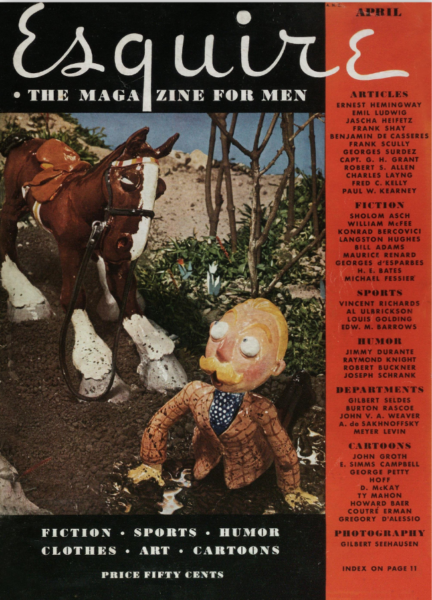 April 1934
April 1934
“A Good Job Gone” finally appeared in the April 1934 Esquire, after it had generated lots of letters in answer to the magazine’s January poll to see if its readers were ready for such a tale.
Apr 1
To Tairy Byrds for breakfast, Ellas’ for tea. Girls left. Noel arrived.
Apr 2
Spent day buying cig. [ ? /? ] for Holt who left for Talos.
Apr 3
Spent morning buying mother lighters. Began play with Ella Winter.
Apr 4
Sent article to Lieber on Homeless Boys of USSR. Dinner at the Gilberts.
Apr 5
Worked on play with Ella Winter.
Apr 6
Lincoln Steffen’s birthday. I gave him an ink pot. Worked on play.
Apr 7
Two friends of Roy’s came down from Oakland, Charles & Clarence.

April 1934 Esquire
Apr 8
Went to church to a meeting of free thinkers with Ella & Mrs. Tusare.
Apr 9
Party at Moseley’s. Lost $2.00 at poker. Wrote letters.
Apr 10
Cocktail party for Gilberts, Tessa Gates & Franklin, Baldwin, at my house.
Apr 11
Fixed stones of front walk. Worked on play. John Reed Club. 3 kittens born.
Apr 12
Dinner of red beans and rice at Willa Blacks.
Apr 13
Walt Gordon, George Johnson came by from NAACP meet.
Apr 14
Started story of the little old spy. Went to hear Dr. Addis speak on Doug. plan.
Apr 15
Cocktail party at Mrs. Lamb’s. Telegram from Wallie about visit.
Apr 17
Saw Hepburn in “Morning Glory.”
Apr 18
Club meeting at Marie’s.
Apr 19
Wire from Carl that stevedore is a great hit in New York. Left for City.
Apr 20
Spoke at S.P. Club in Berkeley & back to Carmel with Gret & Hester.
Apr 22
We clean the brass.
Apr 23
Roy gets bad news & I get good news: P in trouble, $400 for Woman’s Home Companion article.
Apr 24
Nora Holt arrives from L.A. Marie Short & Jane Berlinda [for ? ]
Apr 25
Wire that Wallie is married. Ella Winter for dinner.
Apr 26
Cocktail party at Marie’s for Nora. Noel arrives.
Apr 27
Madame Orlova’s awful lecture. Party at our house afterwards.
Apr 28
Pansy & Gretchen & Mattie & Nebby also Party at Edward Weston’s.
Apr 29
Tea at Mrs. Blanchard’s with Nora & Nebby. Oakland gang leave with Matt.
Apr 30
Weston photographs Nora. She meets Steffens. Dinner at Tessa Gates. Leaves at 11:45.
May 1934
May 1
Proletarian Poetry Eve, at Ella Winter’s. Read Mayakowsky.
May 2
Went to Monterey & F Green’s riding stable; club meetings.
May 3
God knows.
May 4
Roy went to city. I saw “Wonder Bar,” Later to Marie’s to see the D’anguilos.
May 5
Wallace Thurman and Ed Williams arrive from L.A. for the weekend.
May 6
To Steffy’s. Met the [S-forwaks?] of Hollywood Dinner at Tainsy Byrd’s, Willie leaves.
May 7
Roy returns. I recuperate from a licker week-end.
May 8
Al Byrd’s birthday party to which I do not go.
May 9
Work on article about the theatre in Soviet Asia.
— Dockworkers strike begins, Harry Bridges leader
May 10
Felicio is off. Philip Moreland invites us to supper Sunday.
May 11
Lucita Williams comes by to read her senario for Anna Stemm.
May 12
Saw “Eskimo”
May 13
Dinner with Philip Moorland and his mother.
May 14
Received first 10 copies of “The Ways of White Folks”.
May 18
Roy went to city; Noel arrives.
May 19
Roy and Ida Jackson drive down; Ficke for dinner.
May 20
Ben Lehman arrives from desert with a flat tire.
May 21
Ben goes on to city.
May 23
Dinner at Marie Shorts. Noel arrives with Glenn driving.
May 24
Went to concert with Noel to see ceremony of taking the sol. Ruth Short & Leroy came by.
May 25
Noel sang over KYA. Lucita Williams came to read manuscript.
May 26
Dinner with Ella Winter with Soviet Consul Illa Galkovitch.
May 27
Arnold Barranco on KTAB
May 28
Candy to Willa on her return from Texas.
May 29
Flowers to Mrs. Alston.
May 30
Noel comes down. JRC
May 31
Roy goes to Ruth’s farewell dinner
June 1934
June 1
Ruth leaves for Oklahoma. Bill / Noel? arrives. Bob Cantwell and Ella for dinner.
June 2
Cocktail party, Mathias, Jeffers, League, etc [?] Weston dinner in eve.
June 3
Noel, Bill, Roy and I go riding at Green’s Stables. Saw “Viva Villa.””
June 4
Sore from riding. Room all day. Translated with the Anikeeffs.
June 5
Worked until 3 a.m. preparatory to leaving.
June 6
Little donkey for Pansy’s graduation dinner of greens at Al and Harry Byrds.
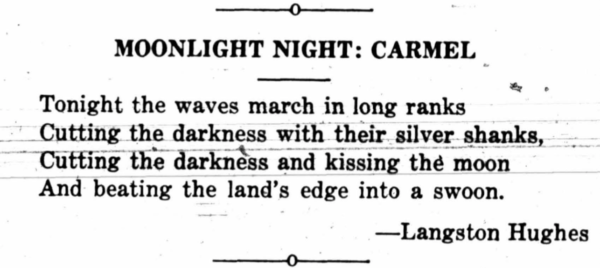
Published June 1934 in the Carmel Pine Cone, this poem’s long ranks marching, cutting, and beating diction hints of political troubles that are surfacing.
June 7
Eulah’s birthday, sweet wine. Had dinner at Edward Weston’s with Havemeyer and Harry and Wilson’s kids [?]
June 8
Took Minnie and her kittens to the pound. Miss WAldo arrives. To city Oakland. Met Roy’s family.
June 9
Bought clothes at XX? Betty Alexander’s for dinner. Music. Noel sang my songs.
June 10
To Oakland for church at Rev. Hill’s. Dinner at Roy’s. Supper with Tallah Mae.
June 11
To Dr. Ball’s. Daisy Pierce Cambbells. To Leslie Denman’s for tea. The Roo’s for dinner. To Wayfarer Theatre, Jack Teagarden? ?
June 12
To opening reception of Soviet Consulate. Lambert, Galkovitch to Jean Wolf’s in evening.
June 13
With Marie Short to Carmel. Supper at her sister’s in Palo Alto. A letter from Key West comes.
June 14
Work with Ella on play. Cagney and Roberty Cantwell at twea with Steffy. Early to bed.
June 15
Worked all day on play. To bed at 2 a.m. with the sea loud from Short house.
June 16
Worked all day on play,
June 17
Marie Welch, Abe Malinkoff at dinner at Ella & Steffy’s.
June 18
Farewell stag party at Bill Henderson’s and Percy Lee’s. Am presented with a purse.
June 19
Dinner at Marie’s with Mrs. Bulla ? Noel came in later. Roy telephoned.
June 20
JRC Meeting. Worked on play.
June 21
Met Robert Montgomery at Ella’s. To Monterey for dinner.
June 22
Worked on play.
June 23
Arthur Lubin, producer of “Green Boy Tree” stops by. To Monterey for dinner. Saw Baer – Carmera fight pictures. Watch it.
June 24
Up at 6 a.m. to city with Margaret Reynolds. Met Walter Armitage. Go to art museum to see French show. Cocktails at Gladys Sachs. Met Elsie Arden. Dinner. Music at Strausses.
June 25
Dinner at Fishersman’s Wharf with Eulah and Roy, To see “The Green Boy Tree.”
June 26
Train to Carmel with Roy, To double keyboard conceft–Winifred Carestles.
June 27
Worked at Ella Winter’s. To bed early.
June 28
Mrs. Blanchard came to say Good bye. WOrked on play.
June 29
Read “Stevedore” and “They Shall Not Die.”
June 30
Agapito Patarel comes to work, Terry Byrd passes in pink baby dress on way to party.
July 1934
July 1
Review of my book in SF Chronicle. The 13 Club and their wives and girls from Frisco in for cocktails. Strode shake ? on strike for our club.
July 2
Radio announces that Noel, Steffy, Erskine Wood ordered & questioned about strike wire sent by com.
July 3
Worked on Play at Ella’s. Stayed thru lunch. End 1st act.
—fFghting breaks out in San Francisco between vigilantes / police and strikers; after a, break in fighting on the 4th, it resumes on July 5 when 2 strikers are killed.
July 4
Worked. Had a guest for dinner. Saw the fireworks on the beach.
July 5
Started article for the Crisis on our Negro Colleges. To Pacific Grove to hear Upton Sinclair on “Epic.”
July 6
Worked on article. Ran on the beach. Evening to the movies. Got new York reviews of my book.
July 7
Went to party at the Kreley’s for the Soviet Consulate and his family. Drinks in car with Terzah and Franklin.
July 8
Consul, Vice-consul and wives came by. Maxwell Bodenheimer lectured in evening..
–After a contentious public meeting in Carmel, a local branch of the American Legion is formed.
July 9
Cocktails at Franklin Baldwin’s. To JRC meeting with Marie & Noel.
–Dockworkers strike begins in San Francisco,
July 10
Noel’s nieces and nephews from Santa Cruz over for picnic at Loboo.
July 11
Poet Strickland and Geo. call at breakfast time. Also John Barton calls.
July 12
Worked on play.
July 13
Worked on play. To see Kuster’s production “Counselor at Law.”
July 14
Worked on play.
July 15
Phil Mooreland and brother and Curley Lawrence came by Also Tallah Malarvines. To strike meeting
July 16
To Fairy’s with Tallah Mae and Roy. Cocktails and radio.
—-General strike in San Francisco begins, in support of dockworkers strike.
July 17
Worked on play. Small party for Tallah Mae in evening,
— In San Francisco, vigilantes attack strikers; in Carmel, the John Reed Club meets to discuss situation, & Hughes notes he is “the only Negro there.”
July 18
Worked on play all day.
July 19
Worked on play. Round-the-world party group ended up at my house.
July 20
The Red Scare broke in Carmel. Rumors that vigilantes are coming.
— –Carmel city orders tear gas and a citizens force begins training, armed with riot guns on the local polo grounds.
July 21
Wrote letters and rested. Roy goes home.
July 22
Wrote
July 23
Wrote
July 24
Up to Frisco by the Sky Line Boulevard at sunset. Very beautiful.
–Marie Short telephones to warn Hughes that violence is imminent and that he is a likely target, and os leaving town “not wishing to be tarred and feathered,.” He’ll stay at Sullivan’s Russian Hill mansion for about 3 weeks.
July 25
Worked on play. Called Roy. Elsie Arden at his house.
July 26
Worked on play.
July 27
To the Bransteinrs for dinner. Hakon Chevalier there & Mrs. Rosenberg.
July 28
To the Euconomic 13 Club Dance and to the Plantation and after party until dawn.
July 30
Farewell dinner with Kenneth Spencer. Later to Plantation where Dee-Dee sings.
–Dockworkers strike ends, although assaults related to it continue into August
July 31
Worked on play.
August 1934
Aug 1
To see “Whom the Gods Destroy” a good movie. Leo Hite.
Aug 2
Haircut. Worked on play.
Aug 3
Col. Wood in town. He, Elsie, Noel, and Rog for lunch.
Aug 4
Helped Eulah wash her ear. To Noble Jones’ housewarming. Eulah passes out.
Aug 5
To San Mateo for concert. Iturbi conducting. Again to Plantation.
Aug 6
Jack Hoskins for dinner with Eulah. To the Wayfarers to see rehearsal of “Ten Nights”
Aug 7
Worked very hard on the play.
Aug 8
Saw Cagney. To Chinatown for eats. Finished “Blood on the Fields” and mailed it off to Lieber and Copyright.
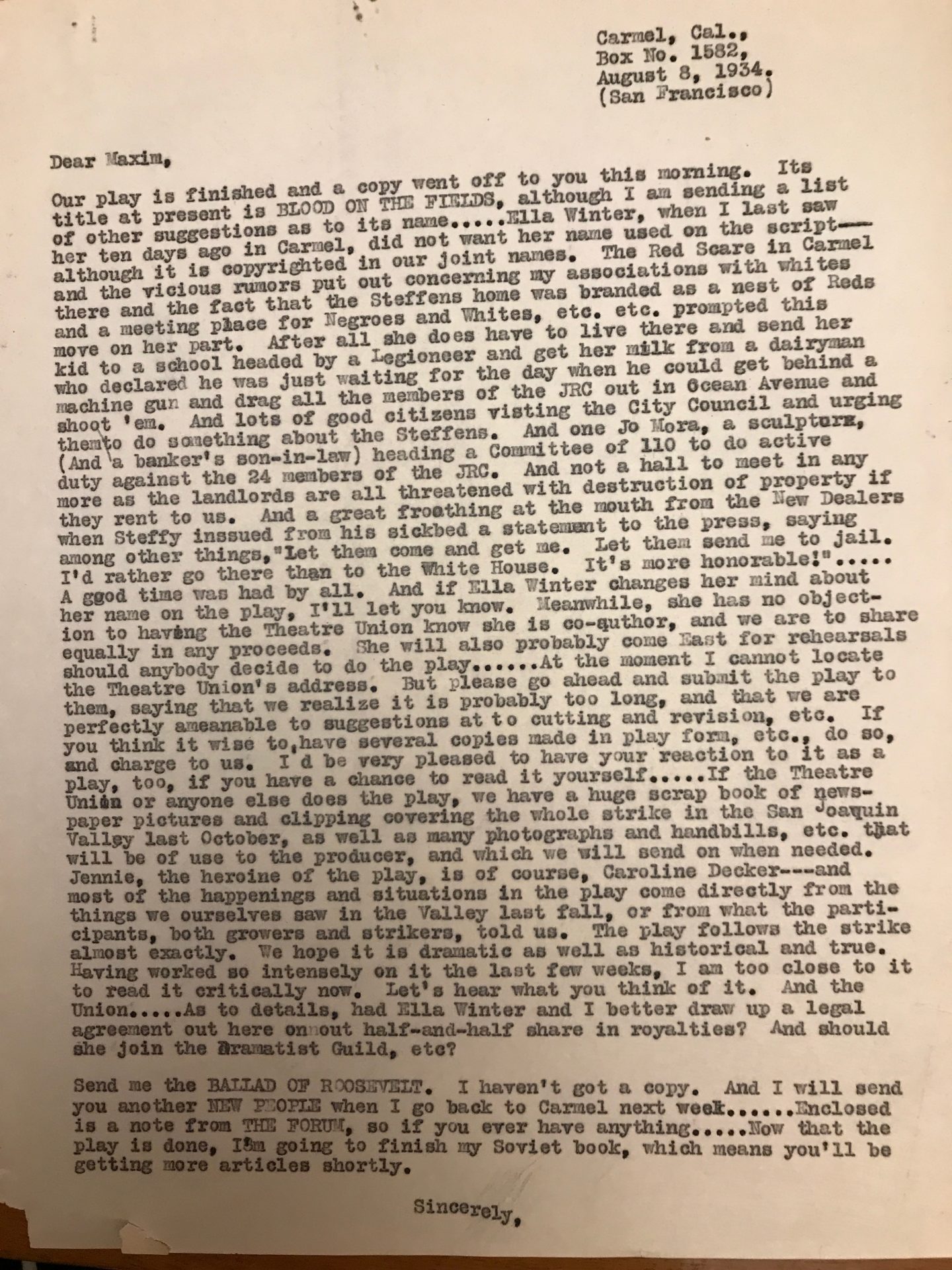
Langston Hughes Papers, Beinecke Library, Yale University
Aug 9
Final work, notes, etc, on play. Tired.
Aug 10
Dictated letters all day. To call on Gleen and his Mrs. just back from Texas.
Aug 11
Had wisdom tooth pulled. To ferry, see Marie off. Missed her. Saw Midge Williams at Paramount.
Aug 12
To Wise Quartette concert at Rev. Haines’ church. To Legion sermon at McGruder’s. To Plantation.
Aug 13
Roy, Eulah, and I to Carmel. The house is transformed. I have a bad cold.
Aug 14
In bed all day with cold. Made a play of “Mother and Child.”
Aug 15
Bad cold. Read and slept.
Aug 16
Read Nijinsky. Wrote letters. Roy telephoned.
Aug 17
Mr. Sullivan returned from the city.
Aug 18
Went by to see Talla Mae. Jack Gilbert of Reno arrived.
Aug 19
Picnic on beach with the Byrds, Talla, etc. Roy arrives at midnight.
Aug 20
Abigail Yount Besabrabian ? artist in for dinner
Aug 21
To Monterey for haircut. Up to Highlands. Concert of piano quartette. Party.
–Hughs and Winter send a signed contract for Blood on the Fields to the Dramatists Club, NY.
Aug 22
Mrs. Kruz and Mrs. davis (Lois’ Mother) came by. Dinner party at Mrs. Sidney Robertson’s. Calista Rogers sang.
Aug 23
Sent flowers to Mosley in hosp. with appendicitis. Wrote letters. To bed early.
Aug 24
Attacked in [Carmel] Sun. To Father Sierra pageant. Wire from Blanche Knopf. ?Cyril Douglass? and Murphy arrive.
Aug 25
Noel’s nieces from Santa Cruz over. To a party at Mary Jones with Talla Mae and Roy.
Aug 26
Alfred Salmon and Jose Mojica came to dinner. Mojica later sang. Went to mass at the mission. Met Mrs. Freemont Older. Worked on files.
Aug 27
Paid Roy off. He goes to Berkeley to enter college. Luncheon at Mark Hopkins with Blanche Knopf, Joseph Jackson, the critic.
Aug 28
To dentist for gold inlay. Dinner Noel & Else. Movie “Little men,” Interviewed by Mrs. Salinger.
Aug 29
Saw Helen Gagahan in “Mary of Scotland.” Luncheon in Sausalito with Ed Best. Mrs. George West, etc.
Aug 30
Cocktails with Else Arden at Charlie Mitchell’s. Left for Carmel.
–More attacks on Hughes in the Carmel Sun, which calls him s a “tireless advocator” for Communism.
Aug 31
Party for Carl and Anne Harris. Talla Mae left for Frisco..
[Rampersad says Hughes’ decision to seek refuge in Reno was “without much thought.” Hughes says simply that he “had always wanted to see Reno.” He had likely heard more about Reno from Jack Gilbert (and perhaps others), whom he noted in his journal had arrived in Carmel from Reno on August 18, 1934. It seems logical but not yet demonstrated that Jack Gilbert provided the contact with Ted Gilbert, who’s prominent in Hughes’ Reno notebook entries. September entries in his notebook are annotated here.
A generally discredited narrative suggests Hughes came to Reno to obtain a divorce; Alain Locke and others reported that Hughes had married a White woman while in Carmel and that the Reno excursion was to divorce her. The FBI maintained in its files that Hughes had married a White Communist, Sonya Kroll, who was married to another Black writer, Eugene Gordon. Even as she discounts this notion, Faith Berry suggests that the woman would have been Ann Hawkins, with whom Hughes and Ella Winter worked on the scriipt that became Harvest. Berry also writes that Hughes was mistaken when he described the boarding house in which he stayed while in Reno, but some of her evidence –that it was near the railroad tracks–seems tied to a different piece of property than 521 Elko Avenue, where Hughes received mail. ]
September 1934
[The Reno-related notebook entries are here.]
Sept 1 [Saturday]
We leave for Echo Lake. Stop at Cathedral Oaks ? to hear Barabas read for Tarah’s birthday. Dinner at the Cats / Cato ?
Sept 2
To Ernestine Ball’s on Echo Lake. Slept under the stars. Can feel the altitude 7620.
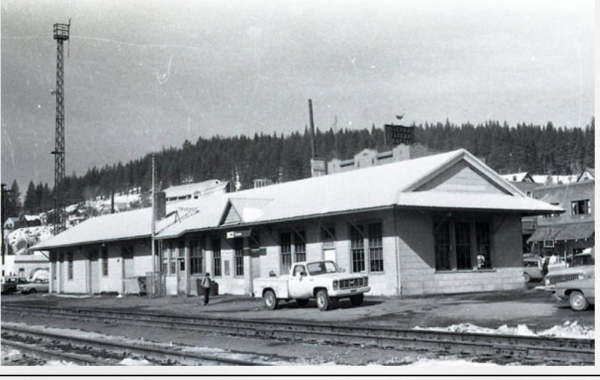
Truckee train station 1940. Truckee-Donner Historical Society.
Sept 3
Rowed and swam in lake. Went to see [BLANK SPACE ] ] getting divorce in Nevada. On to Truckee.
Sept 4
Noel goes to SF. I leave on 5:55 for Reno. Stop at Mrs. Hubard [sic], 521 Elko Street. ADD RR DEPOT @ Truckee
Sept 5
Several fellows, porters, etc, batch here. I go in with them on board.
Sept 6
Got in touch with Ted Gilbert at the old Nixon House. Won 2.00 at Chinaman’s
Sept 7
Had tea with Mr. Gilbert, Mrs. Willard (Union Trust Co.) and Miss Tookey of Washington. Also C—?
Sept 8
Went to Pyramid Lake with same party from picnic, Back to lose 3.00 at Chinaman’s.
Sept 9
Lost 3 bucks at the Chinaman’s. To colored club with Garner.
Sept 10
To the gym with Chocolate and Wilber. Kept time for the fighters.
Sept 11
To Virginia City with Gordon, tour the old gold mines Crystal bar and opera house.
Sept 12
Everyone came to see me off at the airport. Swell flight over the mountains and into the sunset.
Sept 13
Telephoned Talla Mae, Dorothy, Gladys, Matt. Down to Carmel with Noel.
Sept 14
Spent the afternoon on beach with Marie, Rhys, Noel, Ella, Dan and others.
Sept 15
To Peter Pan Lodge at invitation of Mrs Mathias to listen to Krishnamurti, amusing and abstract.
Sept 16
To Big sur and above the fog with Douglas and Marie Smart, Constance Comago.
Sept 17
Worked all day sorting and packing. Wrote letters. Sybil and Vasher Anrkeeff down again to Peter Pan to hear Krishnamurti. This time better.
Sept 19
Paul Fleegal draaws my portrait. Dorothy Erskine comes in for dinner.
Sept 20
Up at 6 and to city. Haircut. Early to bed and to sleep.
Sept 21
Roy typed for me all day on play and new poems. Dinner at Dorothy’s.
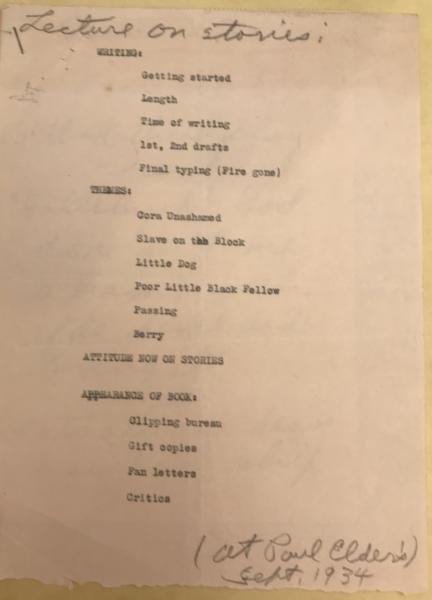
Langston Hughes Papers, Beinecke Library, Yale University
Sept 22
Spoke on my book at Paul Elder’s Gallery. Overflow crowd. Had to speak twice. Met Lillie Kerner and William Saroyan, supper with them. Out with Talla Mae in eve.
Sept 23
Constance Kamaga took my photo. To Carmel by train to see Elsie & Ernestine.
Sept 24
Bouleigh, the pianist, in for dinner with Noel, Elsie Arden and Ernestine Ball.
Sept 25
Up the Carmel Valley to dinner with Paul Flegel at rancho San Carlos. Songs in the moonlight.
Sept 26
Worked on an article “Vigilantes Knocke at My Door.” Sent off poems to Lieber.
Sept 27
Found my account at band overdraawn by 5.80. Went to see Ela and Steffy.
Sept 28
Pat off, so cooked my own dinner. Had two steaks. Noel comes from city.
Sept 29
Started a story “On the Road.” Worked on play. Got $13 check from the New Republic.
Sept 30
Up to Dr. Kocher’s for picnic with Noel and the Shorts. Read Saroyan outdoors.
October 1934
Oct 4
Very early up to city. Went to dentist and home to bed. Slept 11 hours.
Oct 5
Roy came over to type. Worked all day o letters, early to bed.
Oct 6
Letters all day. In evening to see John Pittman just back from New York and Atlanta.
Oct 7
Fan Jacksons come up from L.A. with plans to start a Negro theatre there.
Oct 8
Went to see Billy Justenias exhibit at Courvoiser. Met Albert Bender.
Oct 9
Worked on mail all day.
Oct 10
Went to see my proofs at Constance Kamaga’s. She gives me lovely photo of Lester, Marie Short’s maid.
Oct 11
To Berkeley with Noel to hear Ella Young’s lecture on the Gaels ? and the Tunics.
Oct 12
Wrote 18 letters. Packed. Elsie Arden leaves for New York, me for Reno.
Oct 13
Arrive Reno in early morning. Win 1.50 at Chinaman’s. To colored club at night. Swell blues and jazz.
Hughes Oct 14
To Carson City with the Dixie Quartette. Fouche; Arnette Williams, 2 more of L.A.
Oct 15 – 21 [no entries]
Oct 22
Worked on book. Went for walk. Began on story about dead wife.
Oct 23
Finished a story called “Mailbox for the Dead.” 1st draft.
Oct 24
Went for a long walk in the mountains to the north.
Oct 25
Posted application to the Guggenheim’s Today.
Oct 26 -0-
Oct 27 -0-
November 1934
Nov 4 -0-
Nov 5
A letter forwarded to Reno from Dolores Patino dated Oct. 22 saying my father is very ill.
Nov 6
An answer to my wire of inquiring saying that he did on October 22nd.
Nov 7
Mailed off 4 Negro stories, Professor Tailor & Steward etc. Went to see Count of Monte Cristo.
Nov 8
Won $2.50 at the Chinaman’s. Trying to raise money to go to Mexico.
Nov 9 -0-
Nov 10 -0-
Nov 11 -0-
Nov 12
Check for $100 received from Uncle John. Won $1.50 at Chinaman’s.
Nov 13
Interviewed Oscar Hammonds, the colored weather man here.
Nov 16
Left tonight for Frisco. Bill Allen’s birthday, wine drinking party.
Nov 17
Arrived S.F. Went to Mexican consulate. Had to wire for visa.
Hughes made only 4 brief California entries before leaving for Mexico on December 9, when he was stopped at Nogales “for several days” by Mexican authorities because his visa does not say he is “colored.”
• • •
